Last fall, I visited the Denver Museum of Nature & Science. I’m not sure I’m qualified to write a real review since I only visited for half a day and it’s such a big place! And I’m so behind on blogging that some of the exhibits that I spent a lot of time in are already gone… But I’ll do my best to touch on everything even if I didn’t experience it myself.
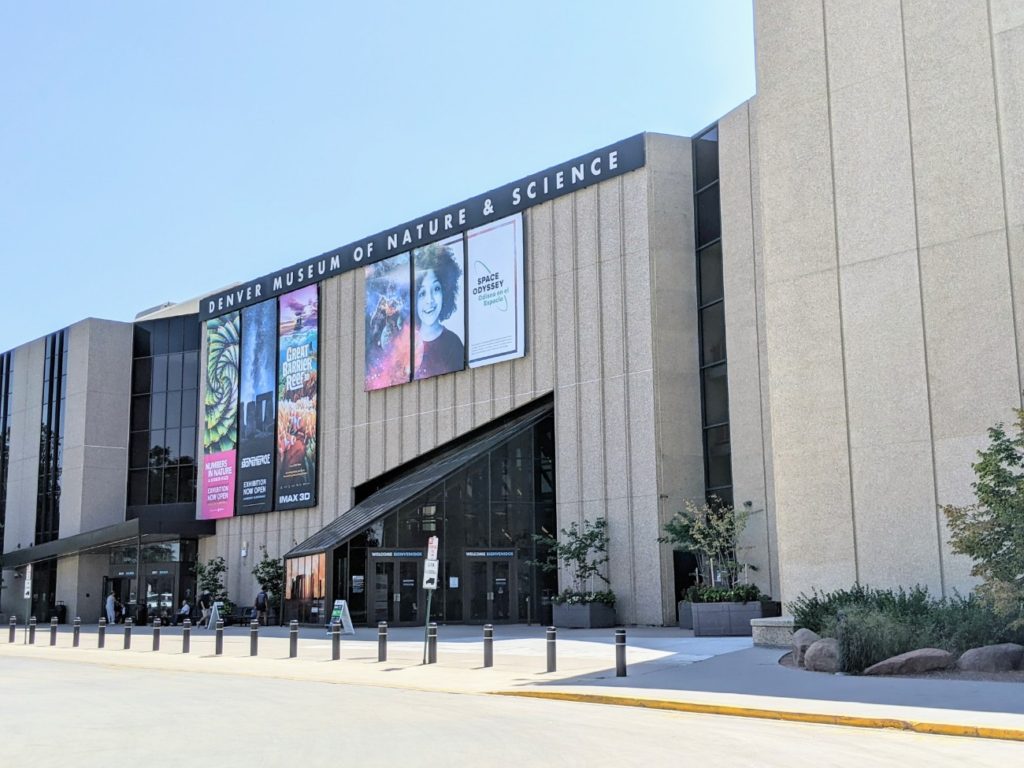
Denver Museum of Nature & Science
The Denver Museum of Nature & Science (which I keep wanting to call the “Denver Natural Science Museum”) is a HUGE place, with world-class exhibits featuring animals & insects, dinosaurs, Egyptian mummies, the human body, gems & minerals, and outer space. Temporary exhibits on topics like Stonehenge, and the history of the guitar rotate throughout the year.
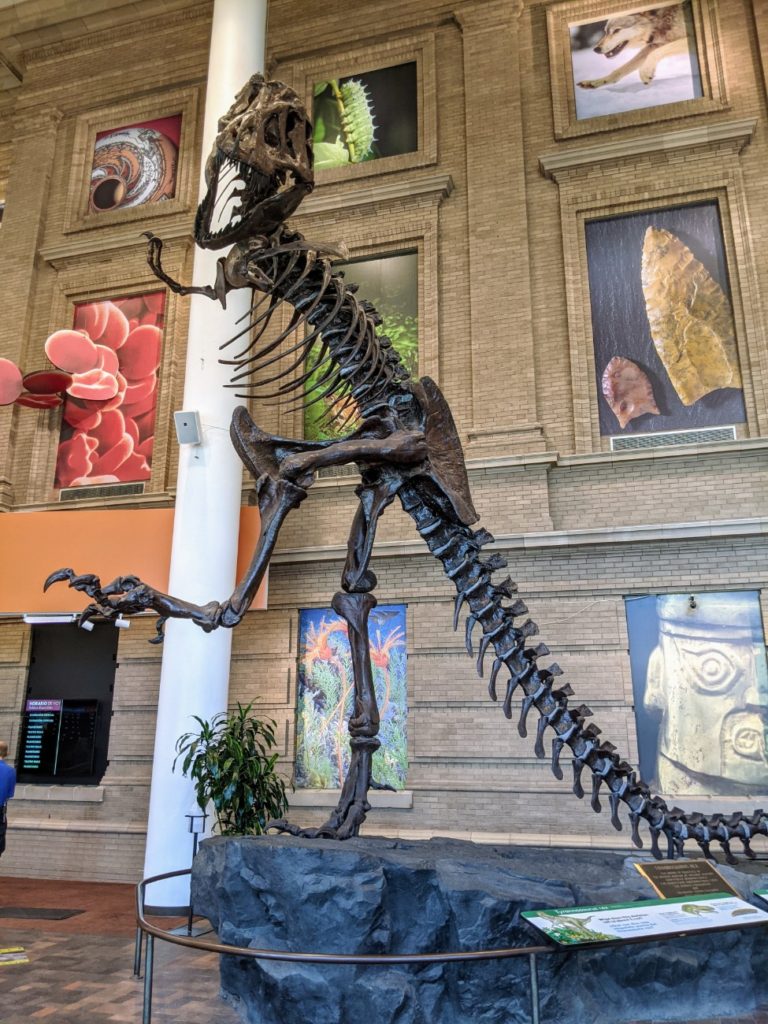
In addition to the exhibit halls, there is a planetarium with five different shows and an Imax theater with two 3D movies. It reminds me of the South Carolina State Museum, though more focused in its scope, and much higher in the quality of the exhibits. The Denver museum is up on the level of the Smithsonian museums in Washington, D.C.
Walking in the front door can be a little disorienting if it’s your first visit. A vast atrium reaches up 3-4 floors, with stairs, elevators, and walkways connecting the different sides. It looks a little like the moving staircases at Hogwarts. Huge signs direct you to the different exhibits, but it’s definitely a place to get lost in and wander.
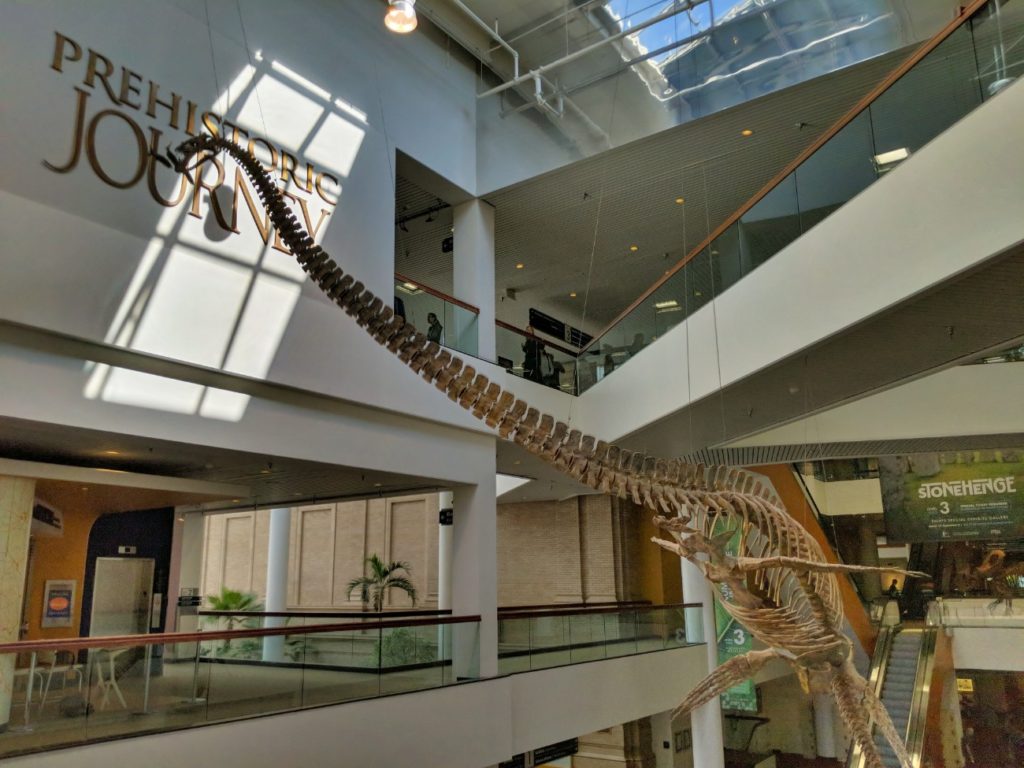
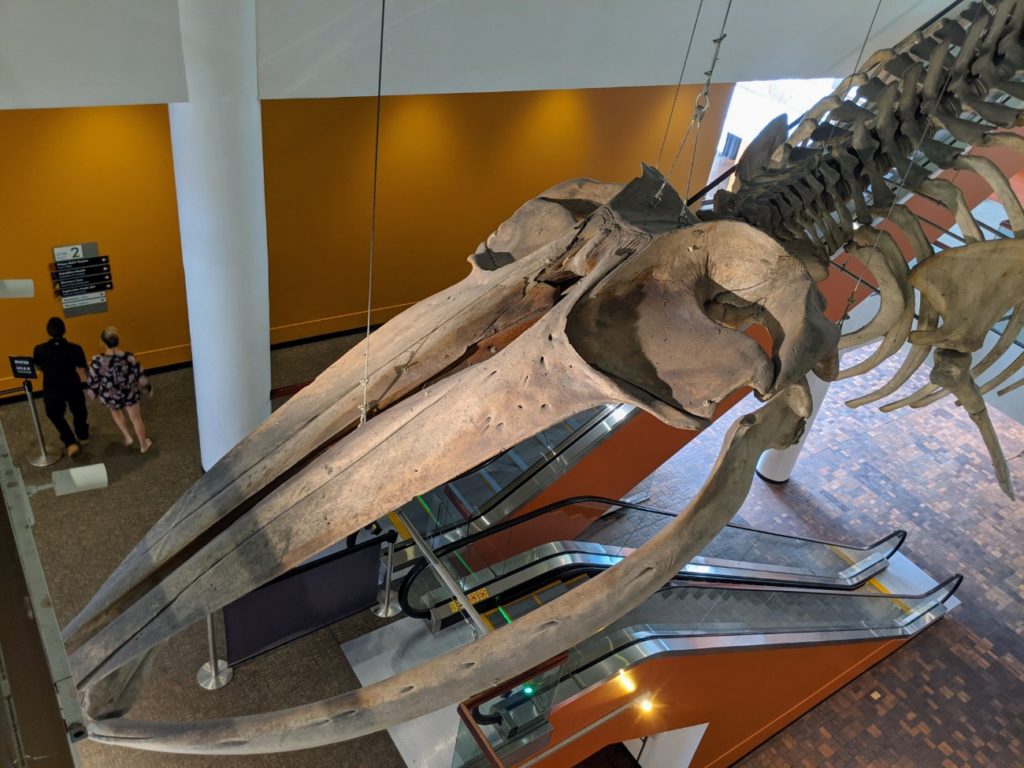
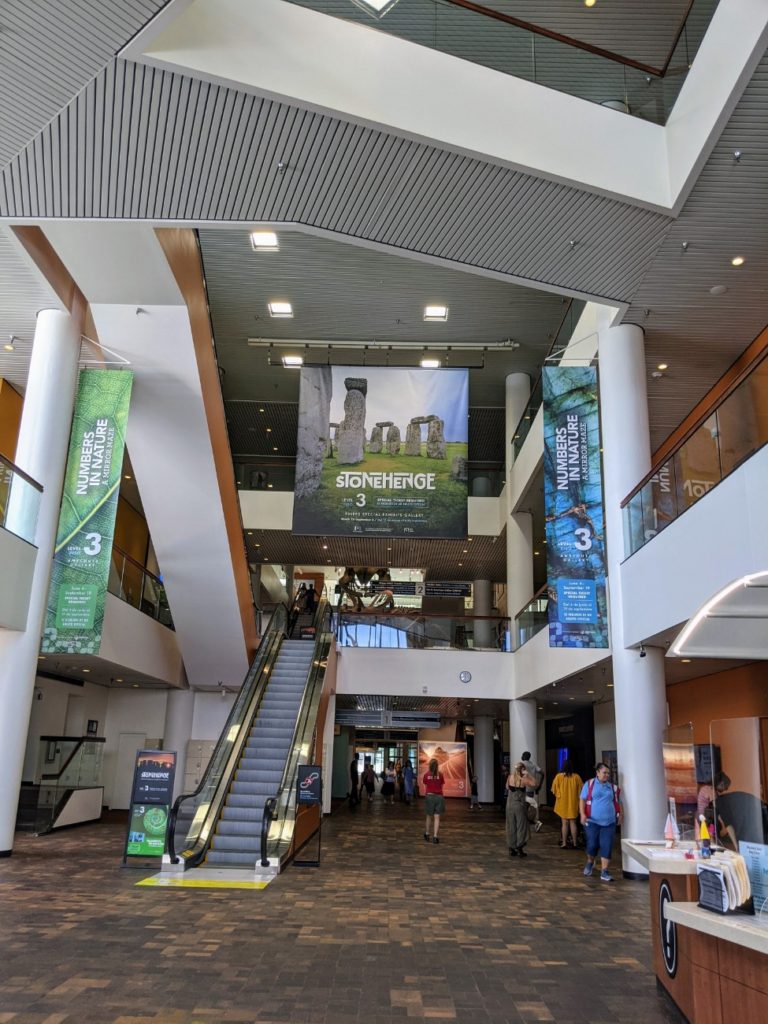
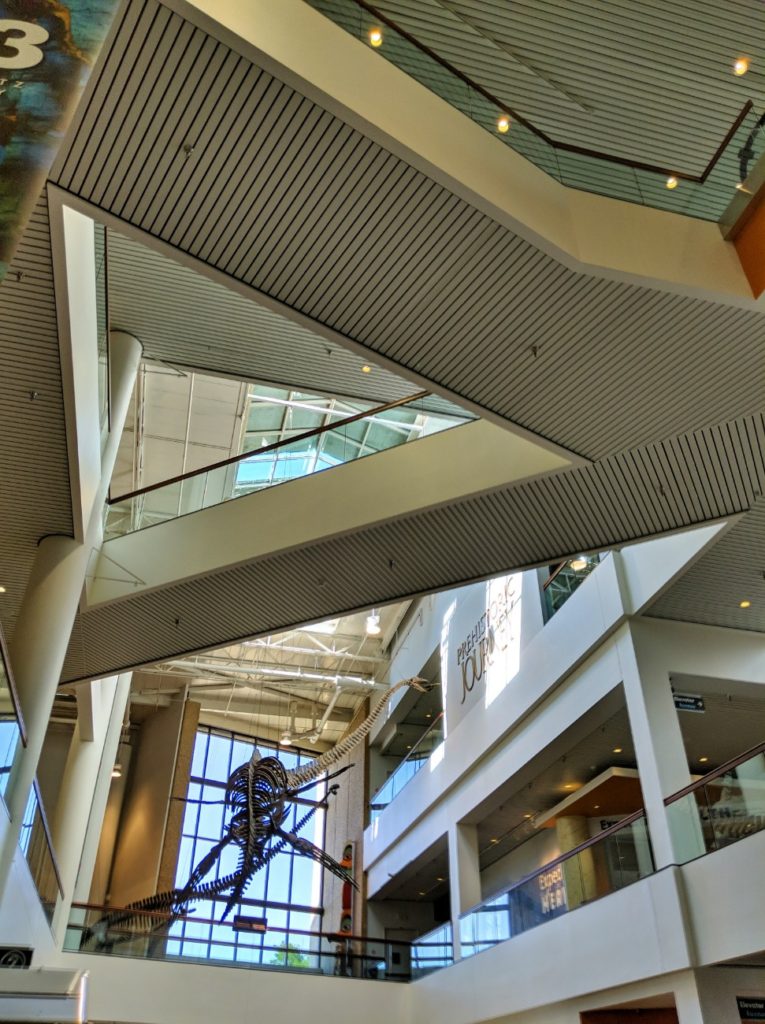
Since I was short on time, I asked at least three different museum employees and volunteers what I should make sure not to miss. I got three totally different answers! To say the collection is sprawling would be an understatement.
Wildlife Halls
If there is a base for the museum’s collection, it would probably be the Wildlife Halls. Taking up at least half of the top two floors are large, lifelike dioramas of animals in situ. Cheetahs race across a dry savanna after gazelles, tiny puffs of dust around their feet. Huge manatees seem to float in a blue-hued underwater scene. Various animals are convincingly frozen mid-wallow at a watering hole. It feels exactly like a window into a different country, a different world.
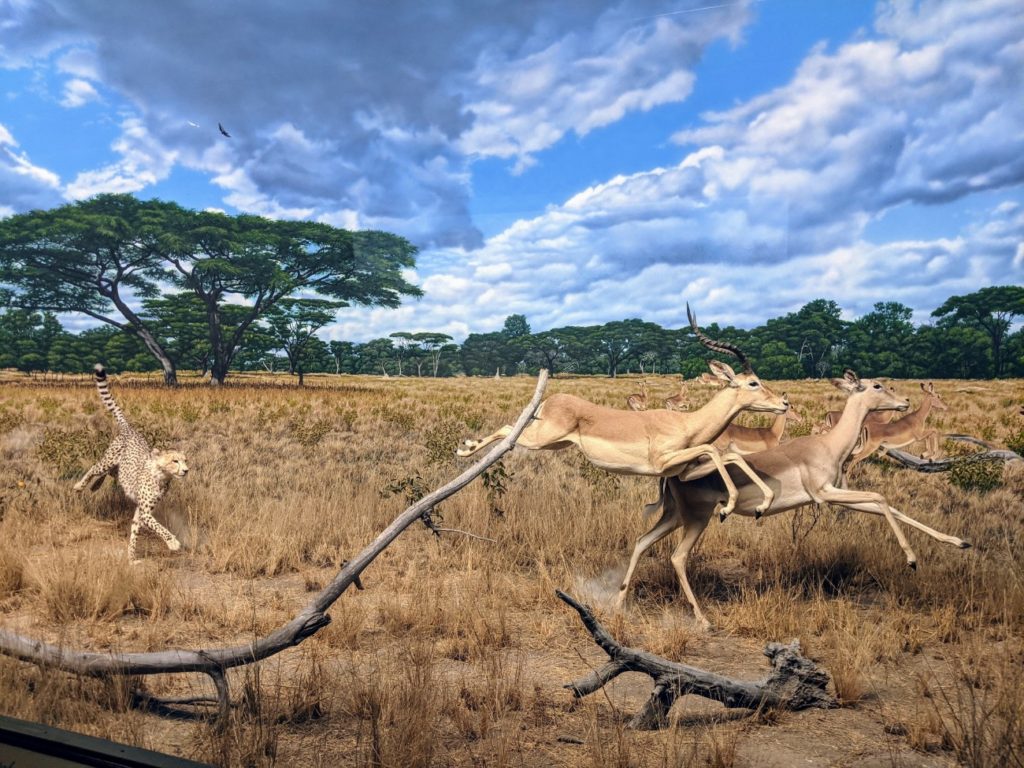
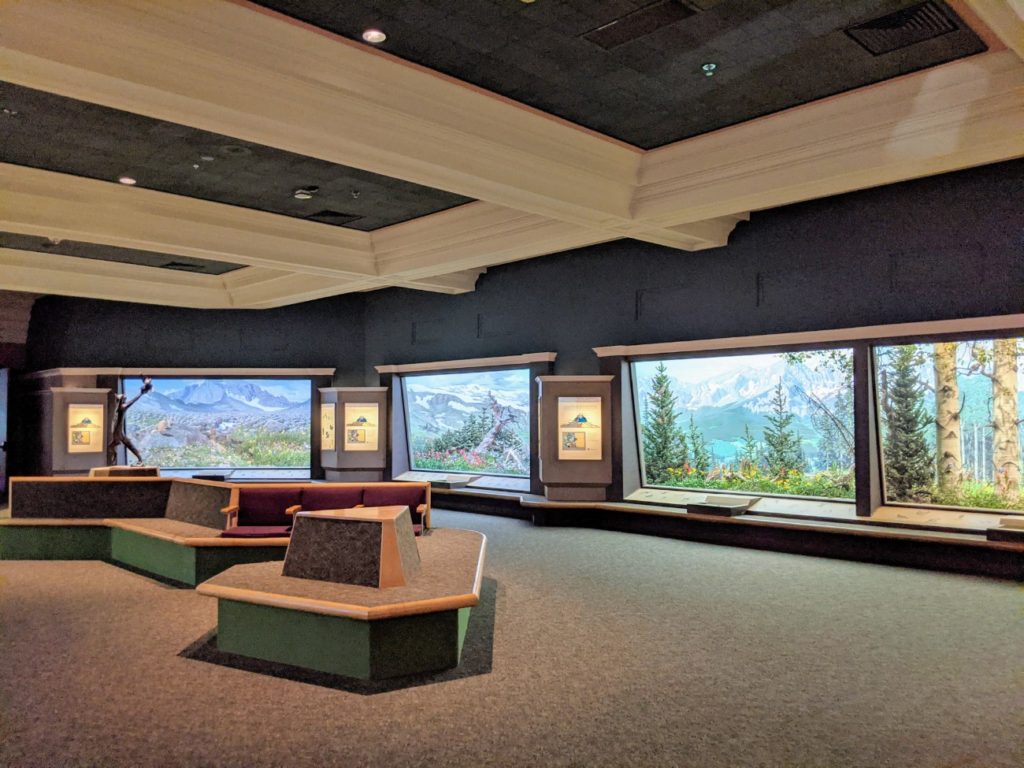
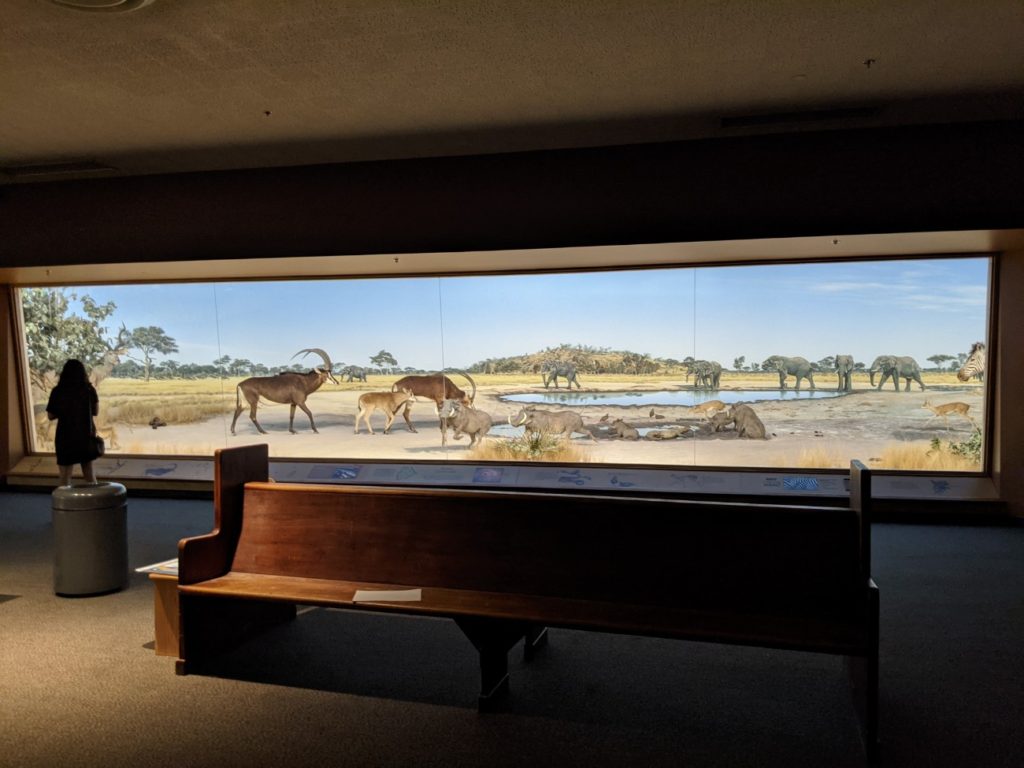
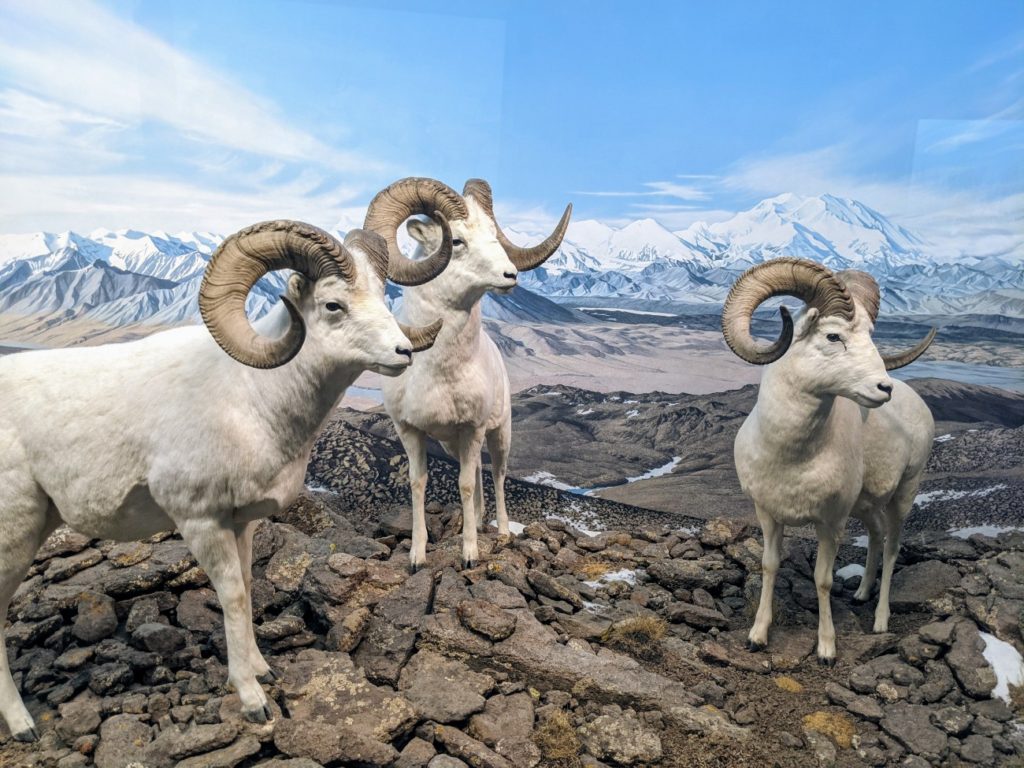
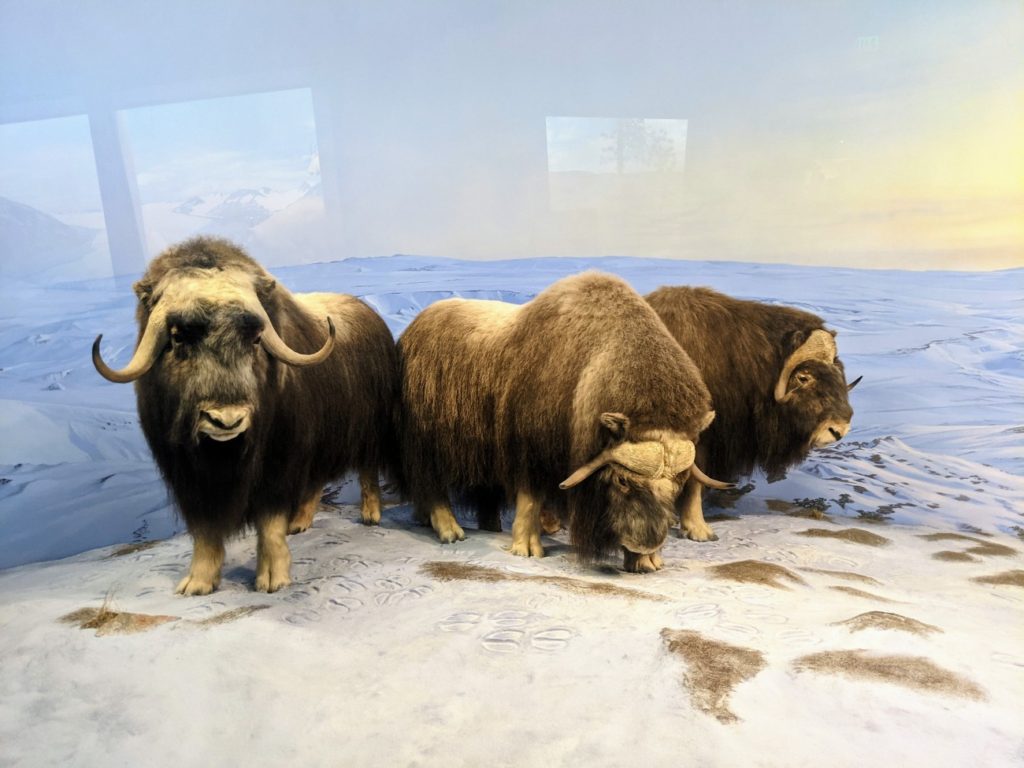
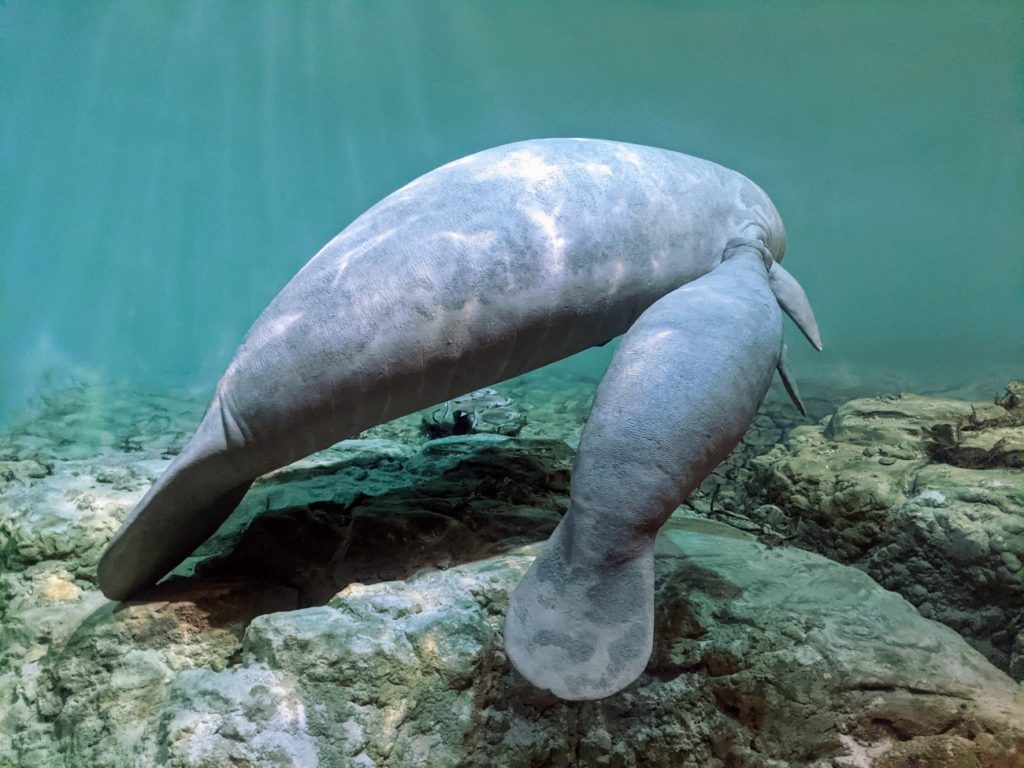
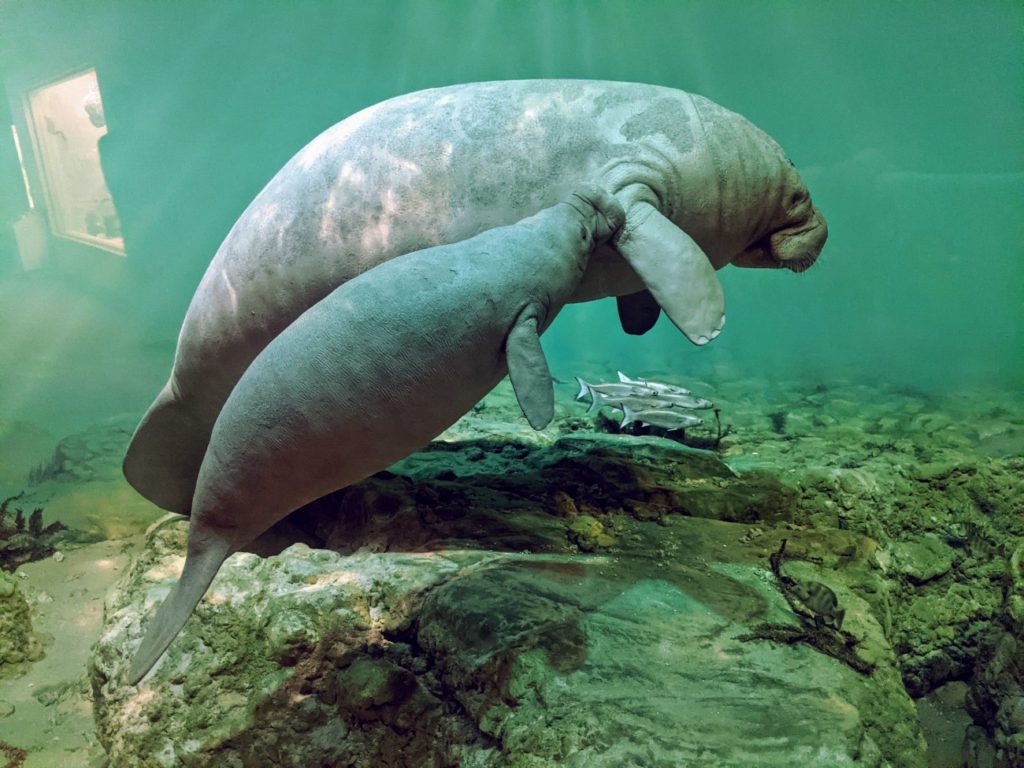
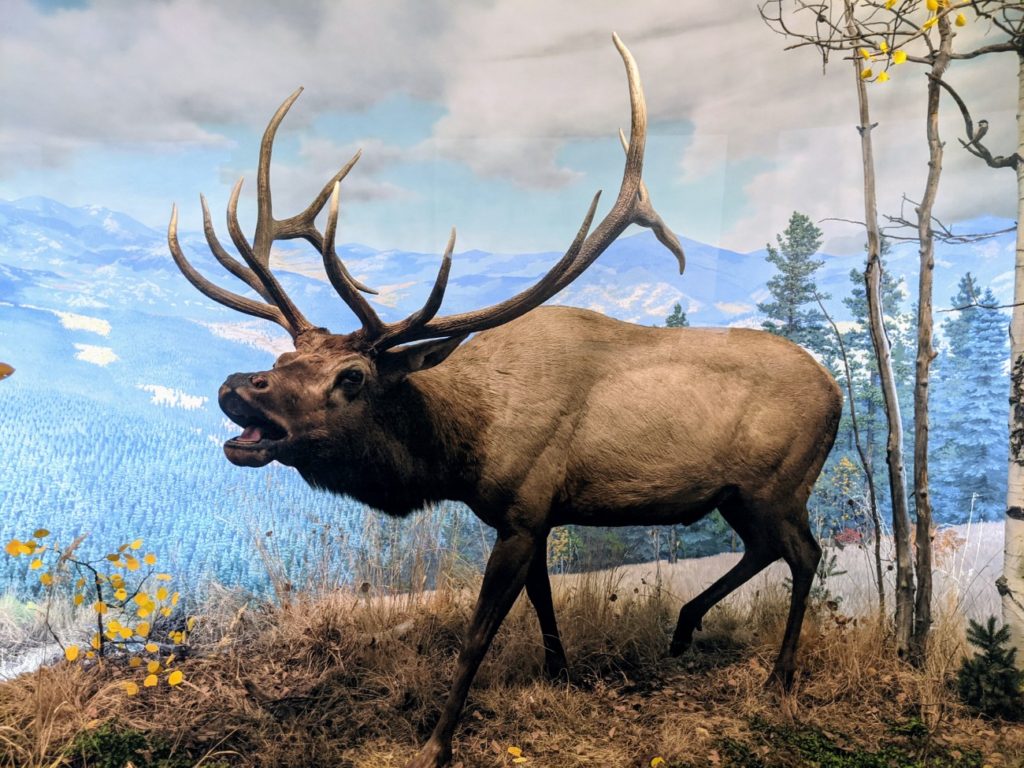
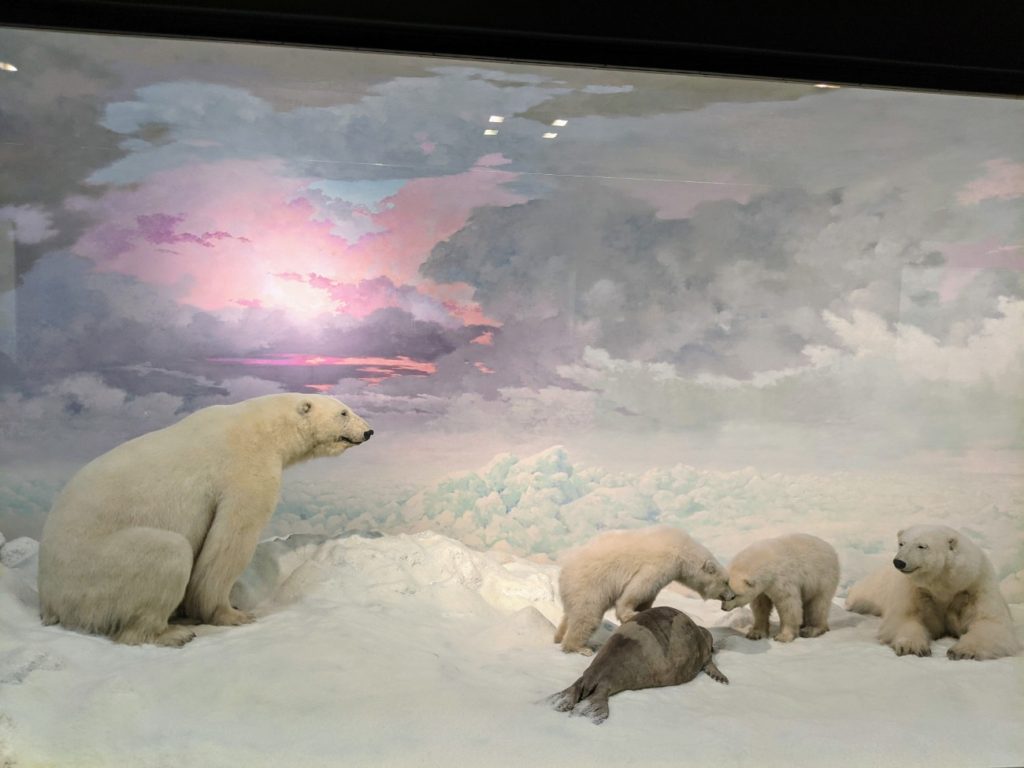
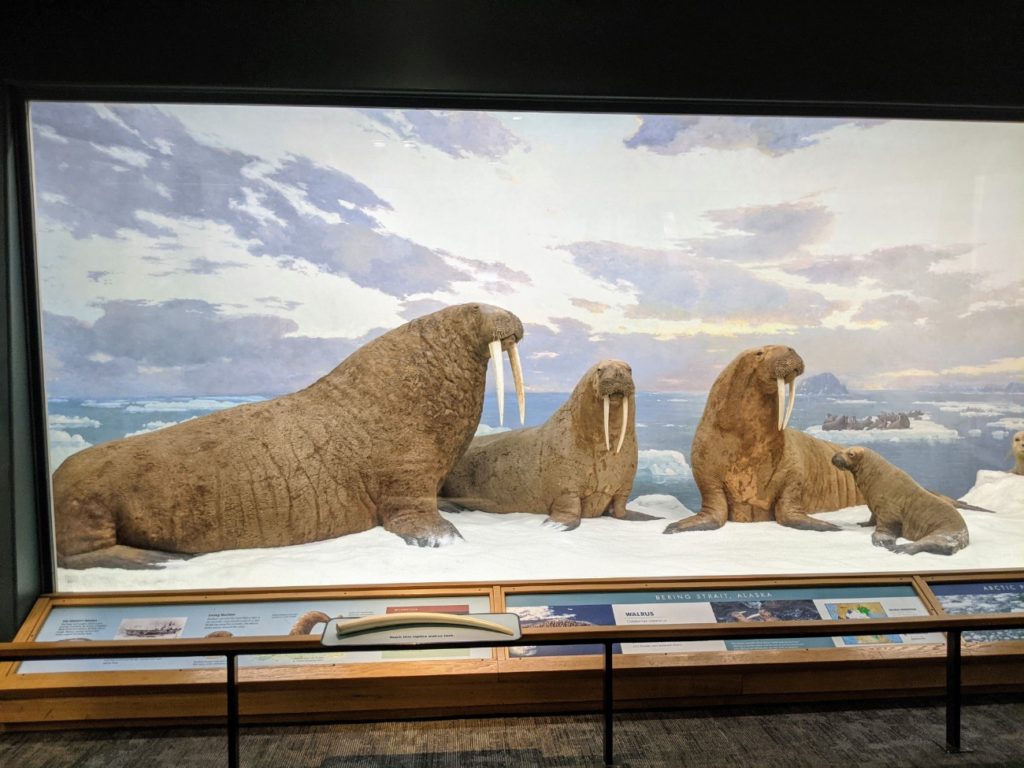
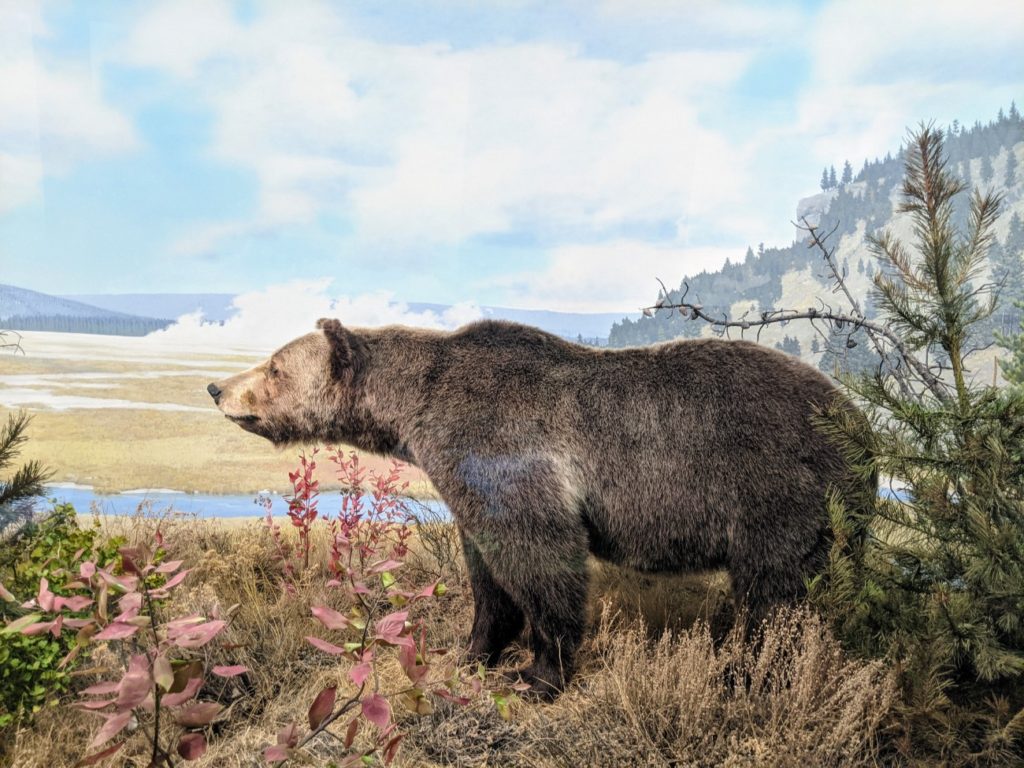
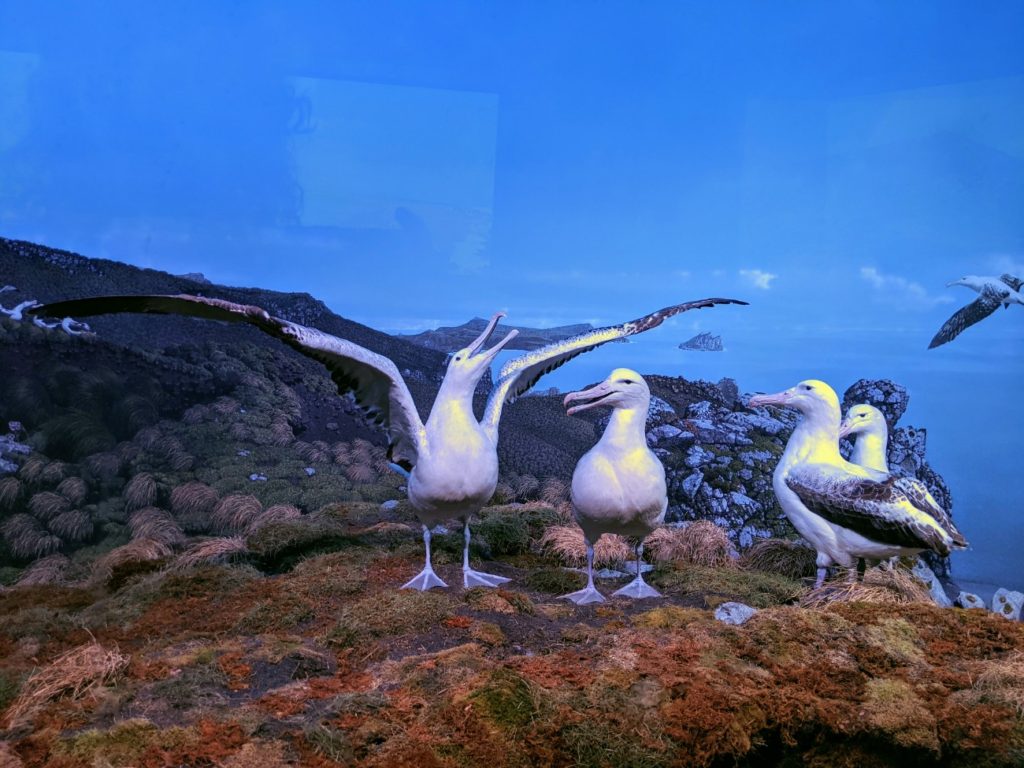
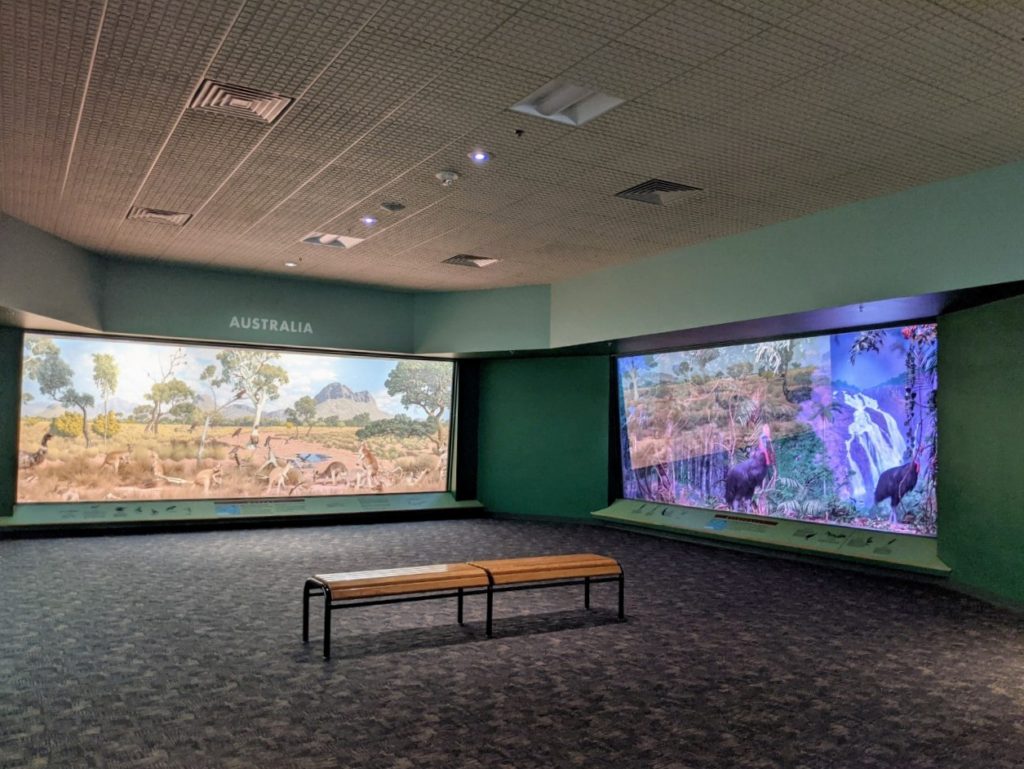
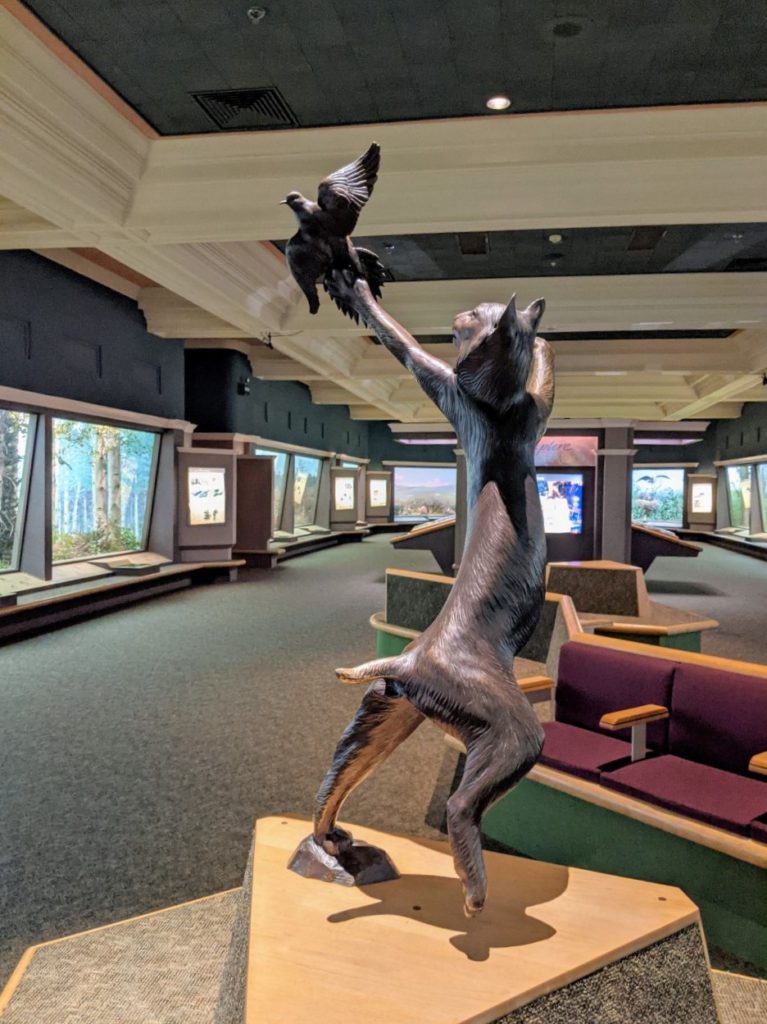
One thing that hits you is how BIG the animals are since you can stand closer to them than you ever would (or should) in real life. Another is how quiet these galleries are. There’s lots of open space and not a lot of people. For one, they are static displays that you can view at moderate cruising speed. Meaning, there’s minimal standing around and interaction. And they don’t draw in a lot of kids. And possibly, if you’ve seen them before, you may not feel the need to see them again. All that makes these halls a favorite of mine. They are so peaceful.
You can find the Wildlife Halls on floors two and three. The dioramas are organized by region and animal, including a room just for the animals of Colorado. I found myself in and out of these halls throughout my visit as opposed to doing them all at once.
A smaller area with beautiful butterflies and insects can be found on the ground floor in a large alcove.
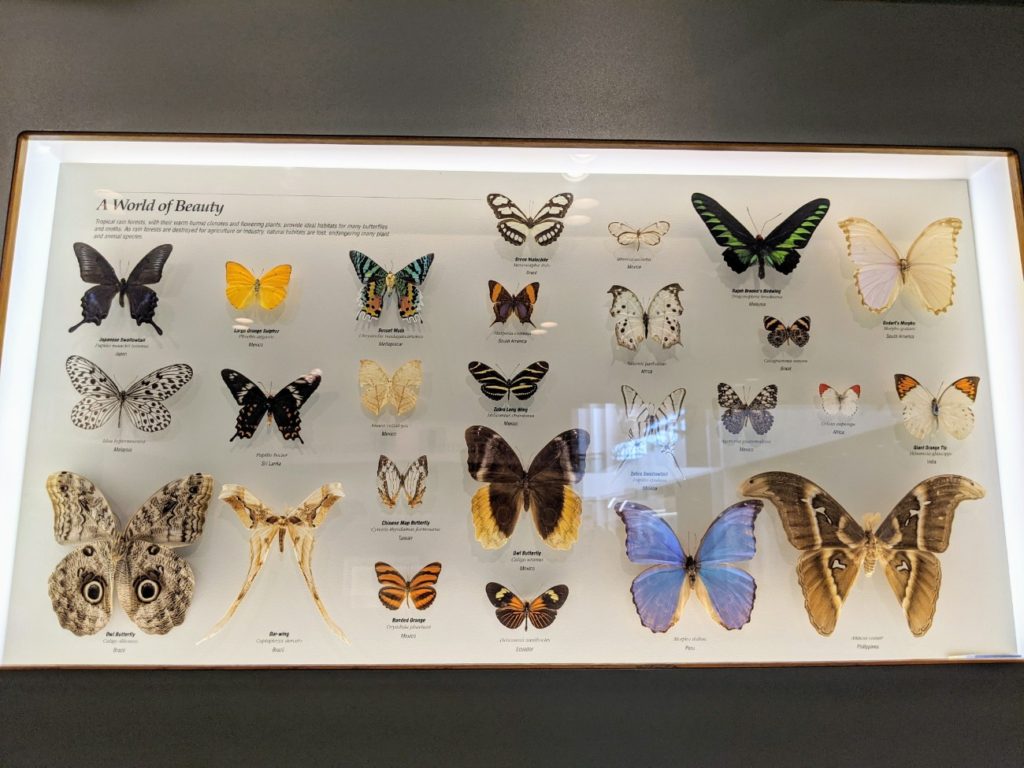
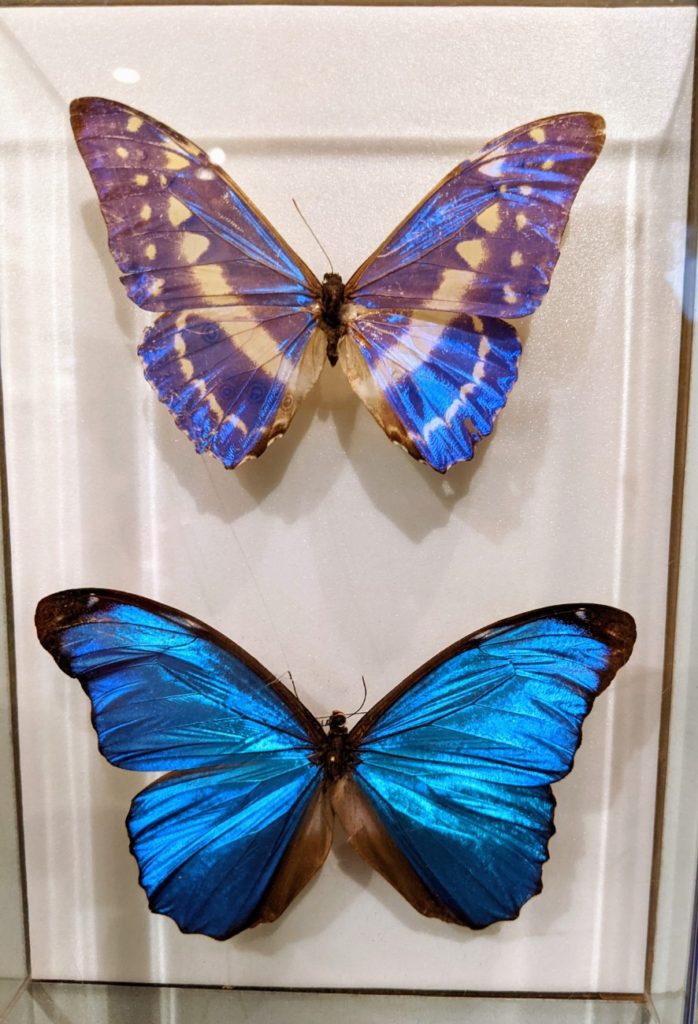
Prehistoric Journey
Prehistoric Journey is where you’ll find all the dinosaur bones in a two-floor dynamic display. Skeletons are posed in everyday life and conflict. A T-Rex nips at a Stegosaurus while a Pterodactyl zooms overhead. Herds of tiny dinos run around their feet. Massive skulls and displays walk you through the advent and demise of the dinosaurs.
You can find Prehistoric Journey on the top floor of the museum.
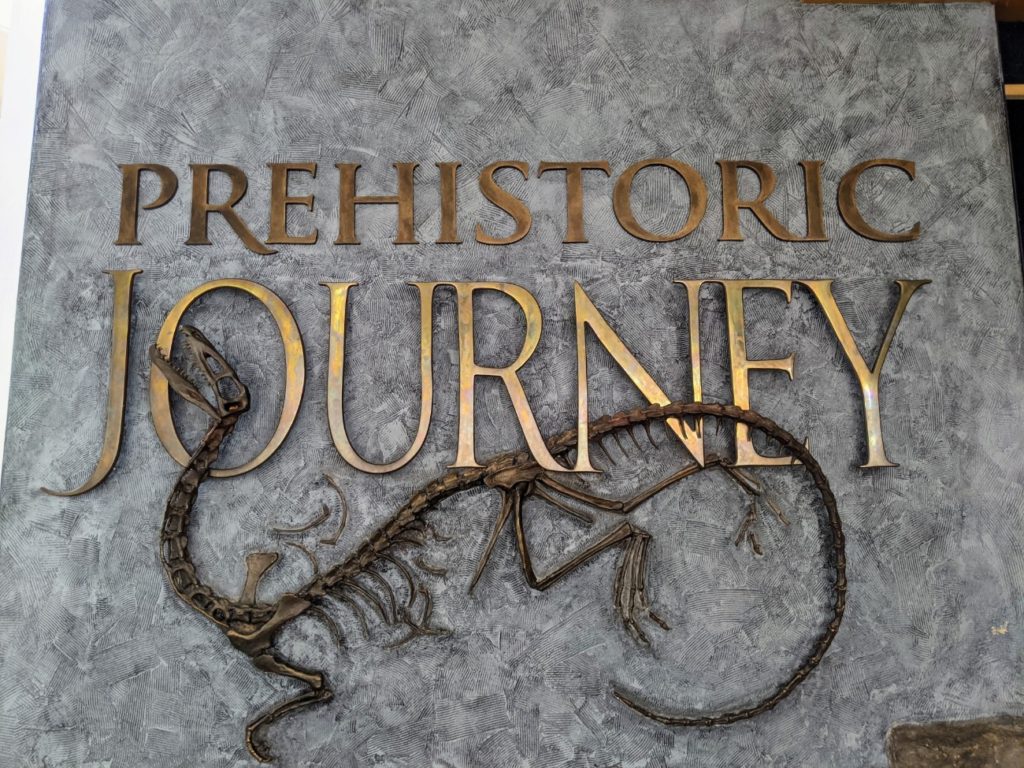
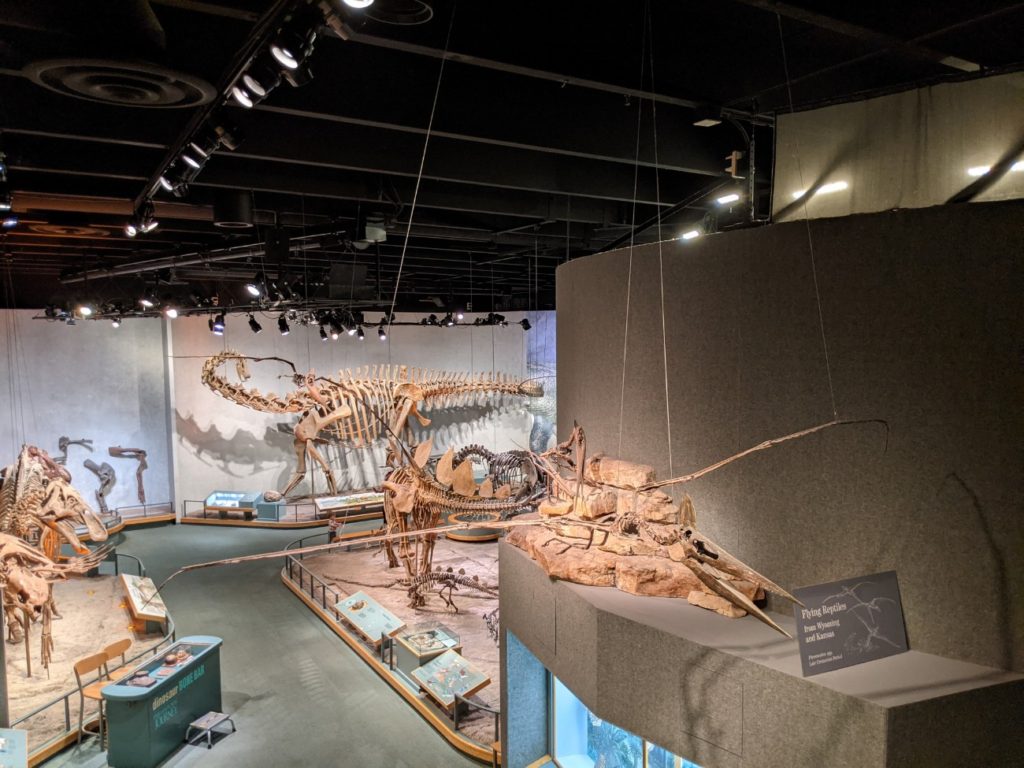
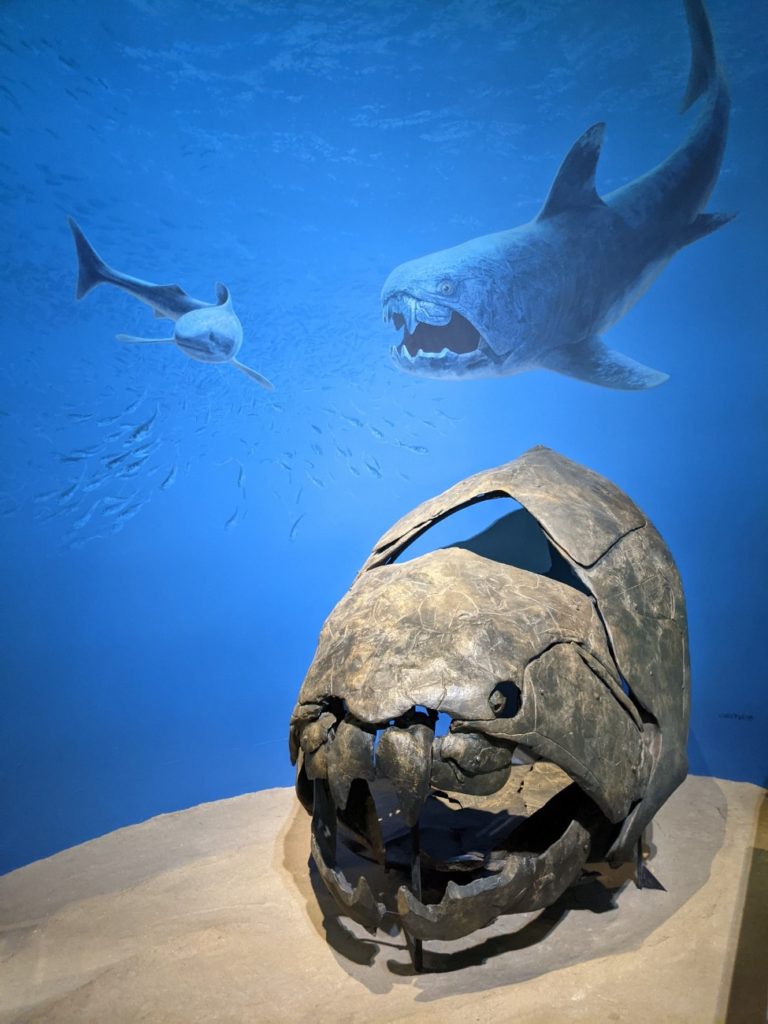
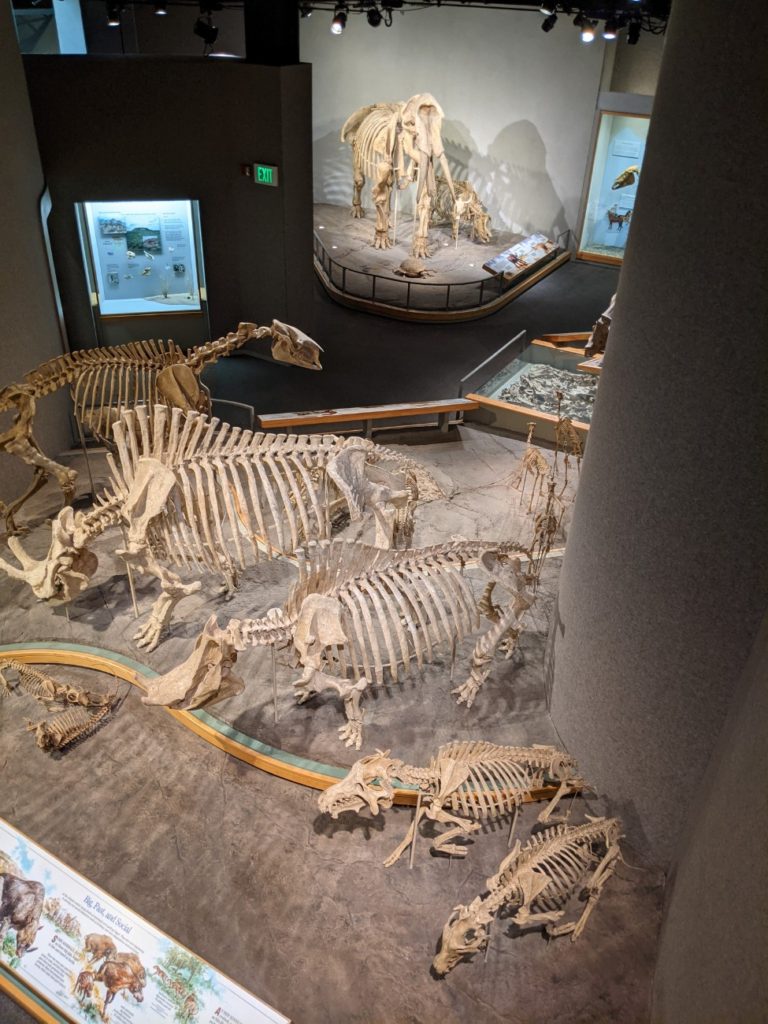
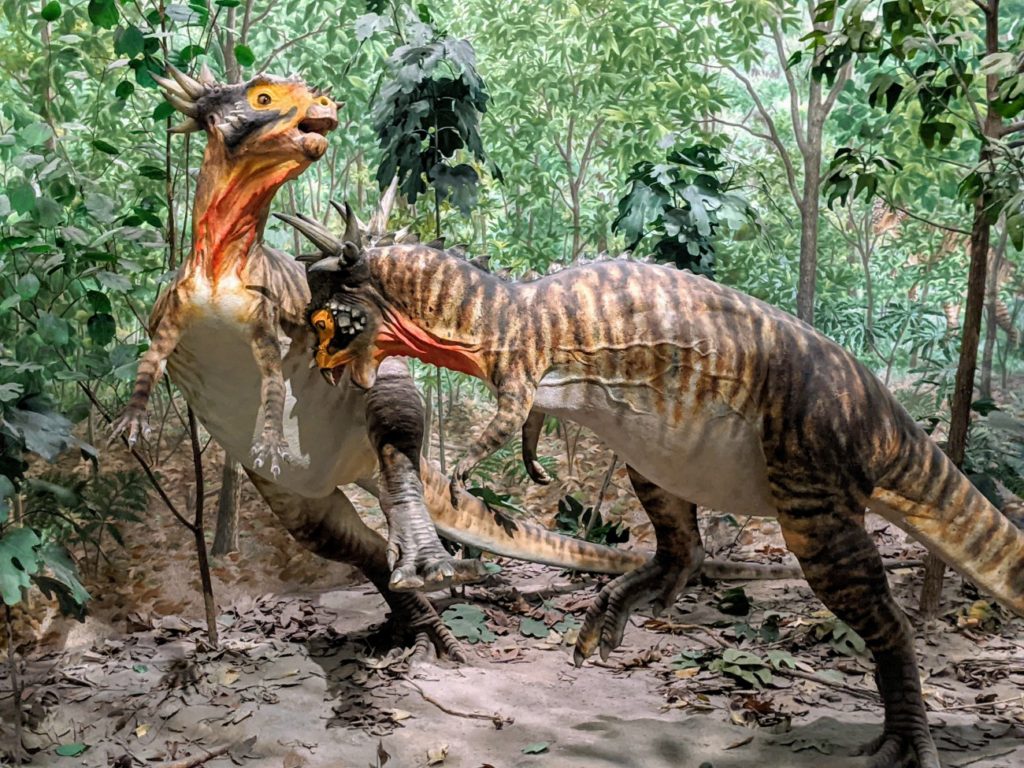
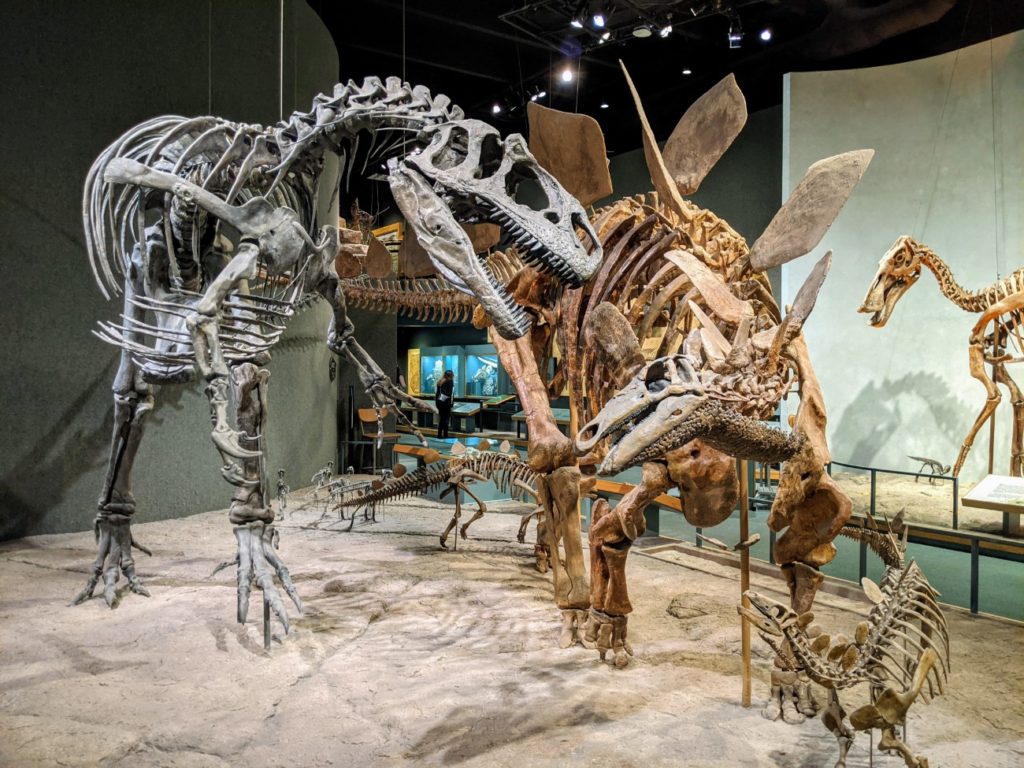
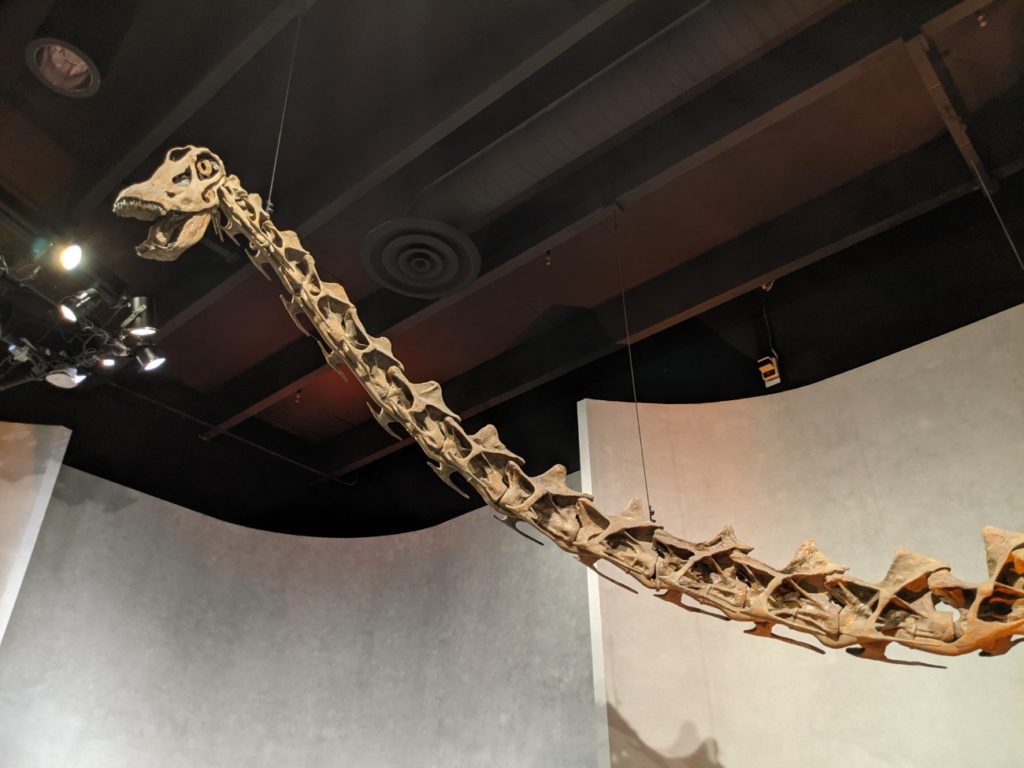
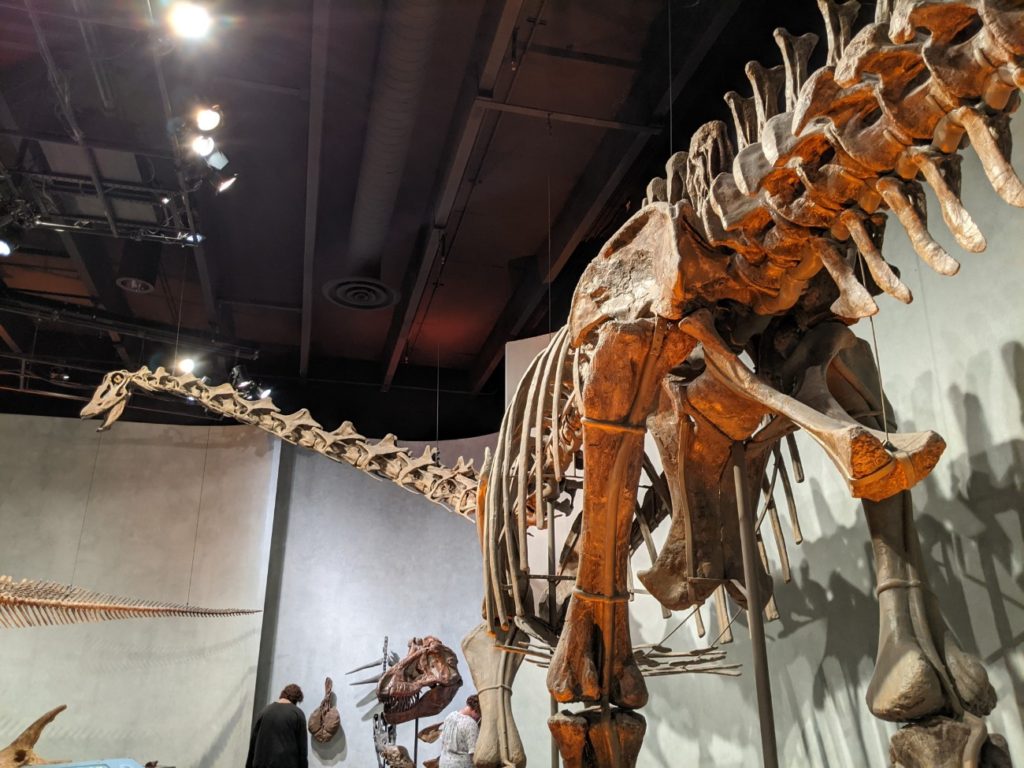
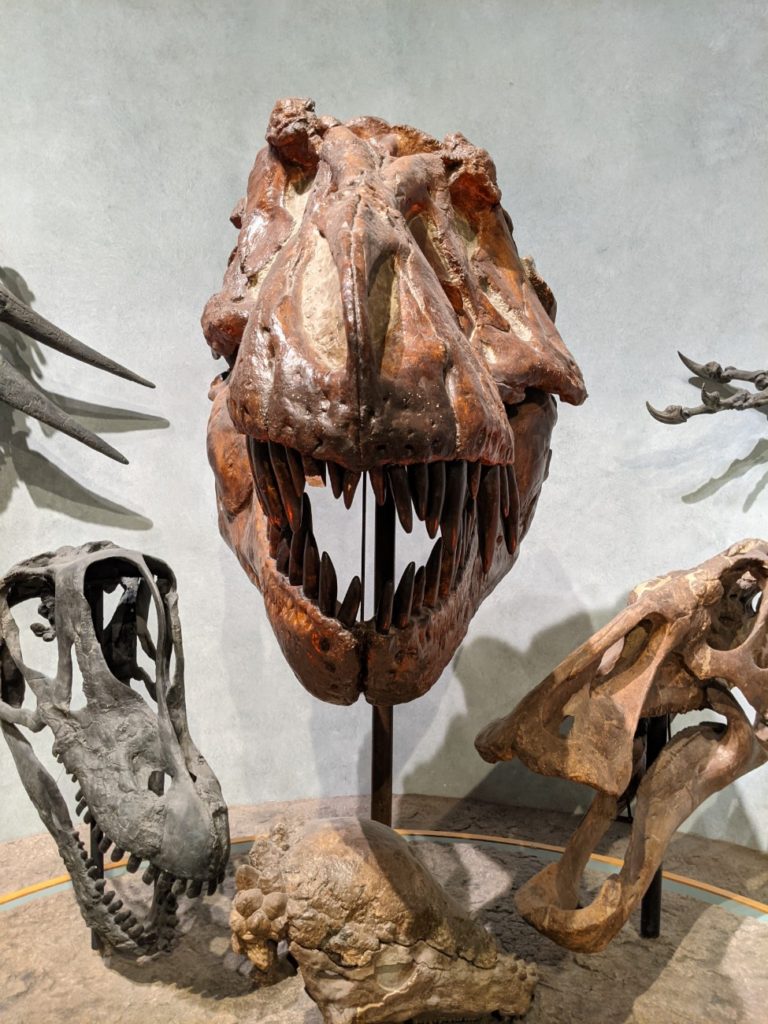
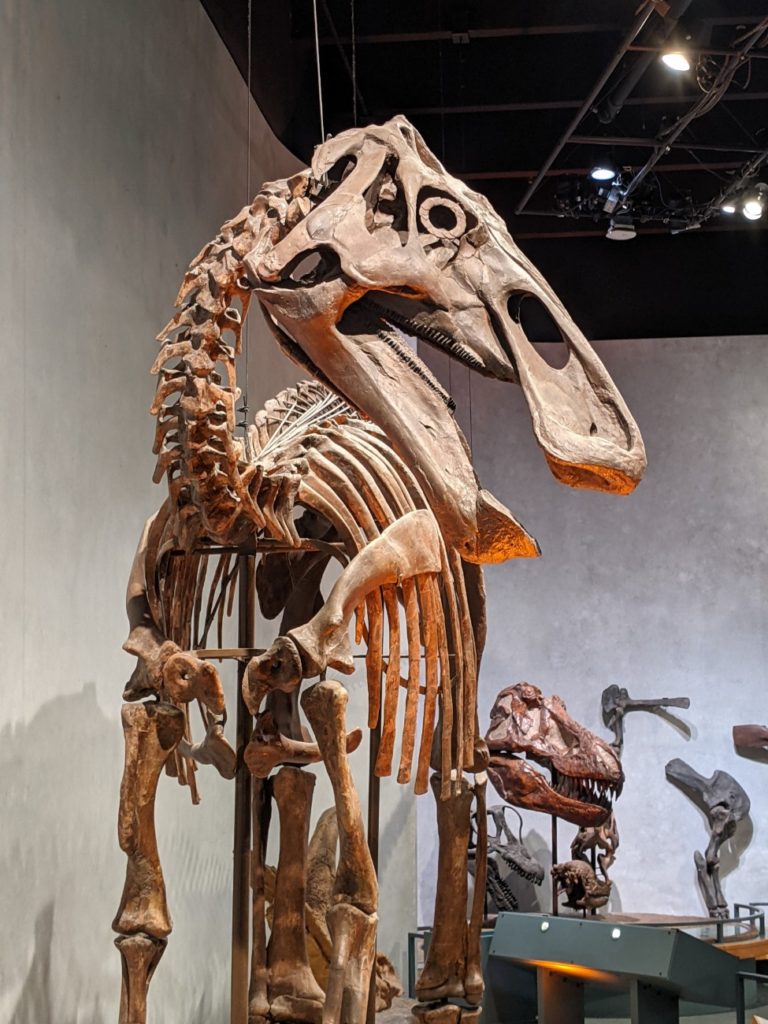
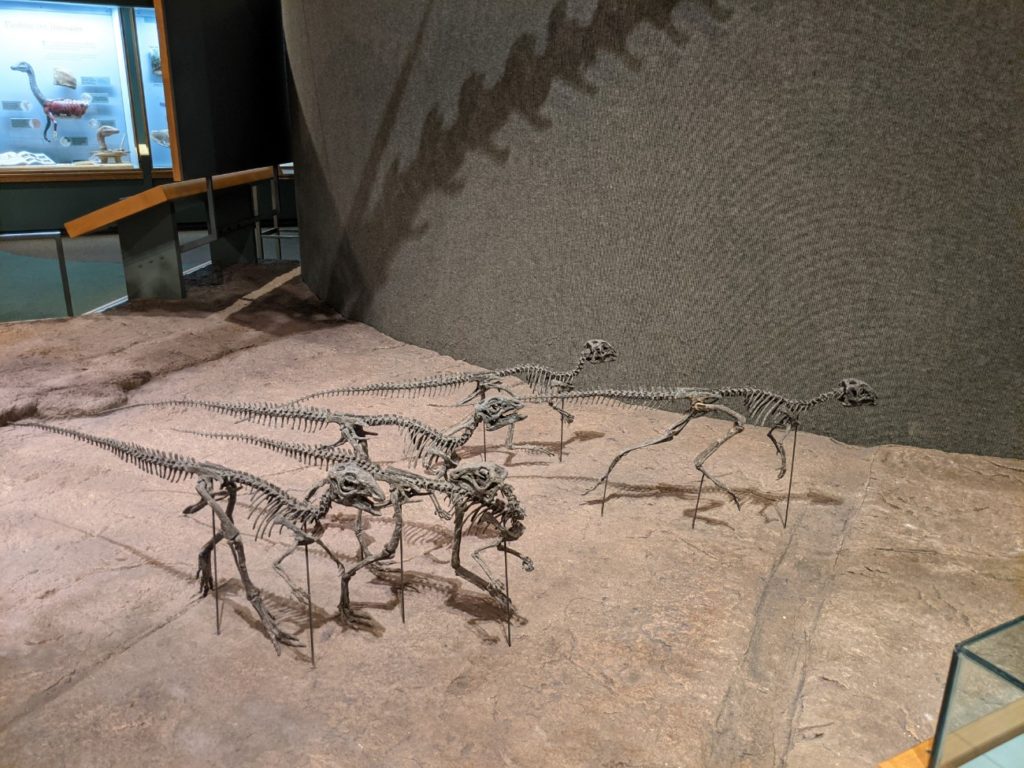
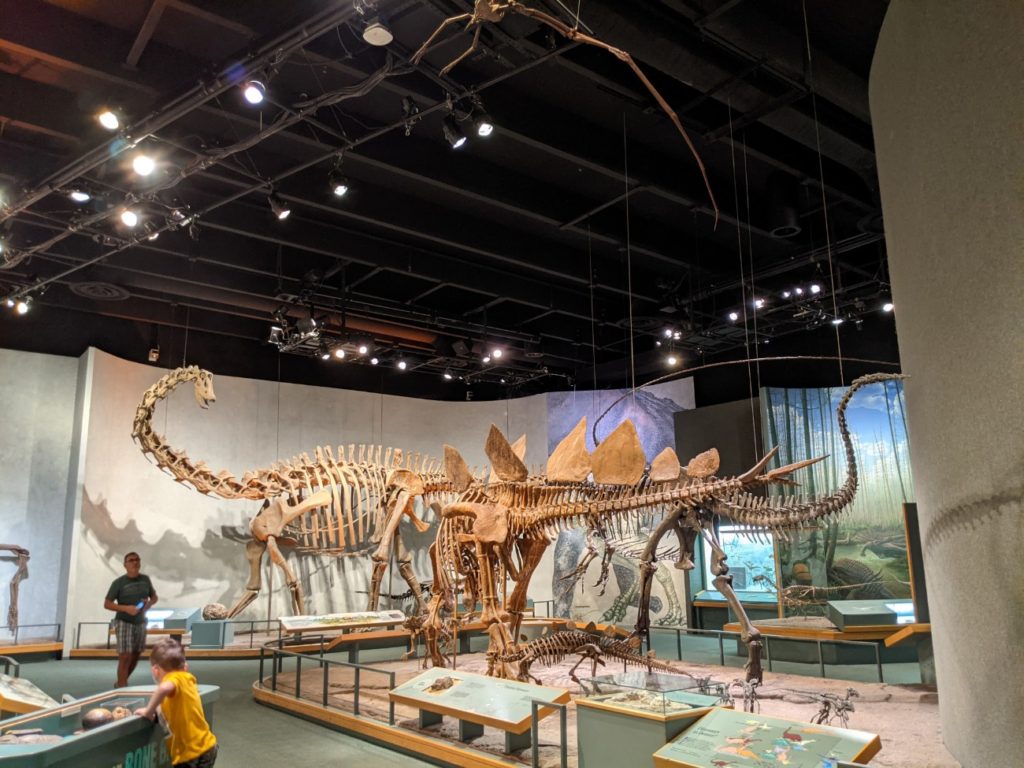
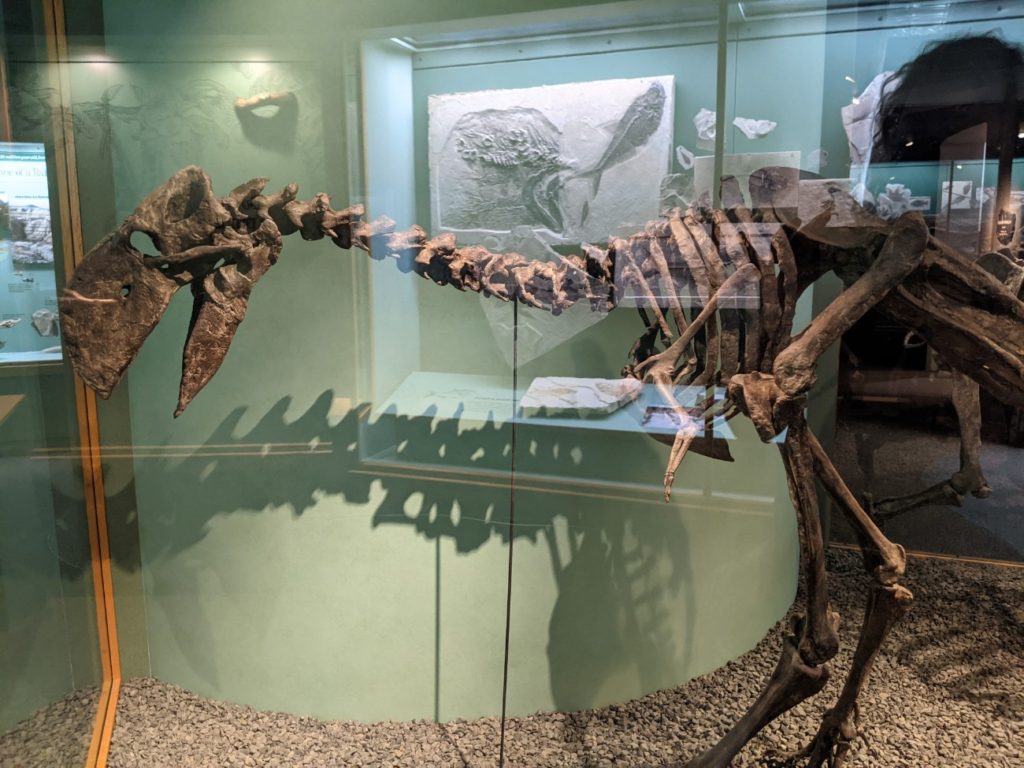
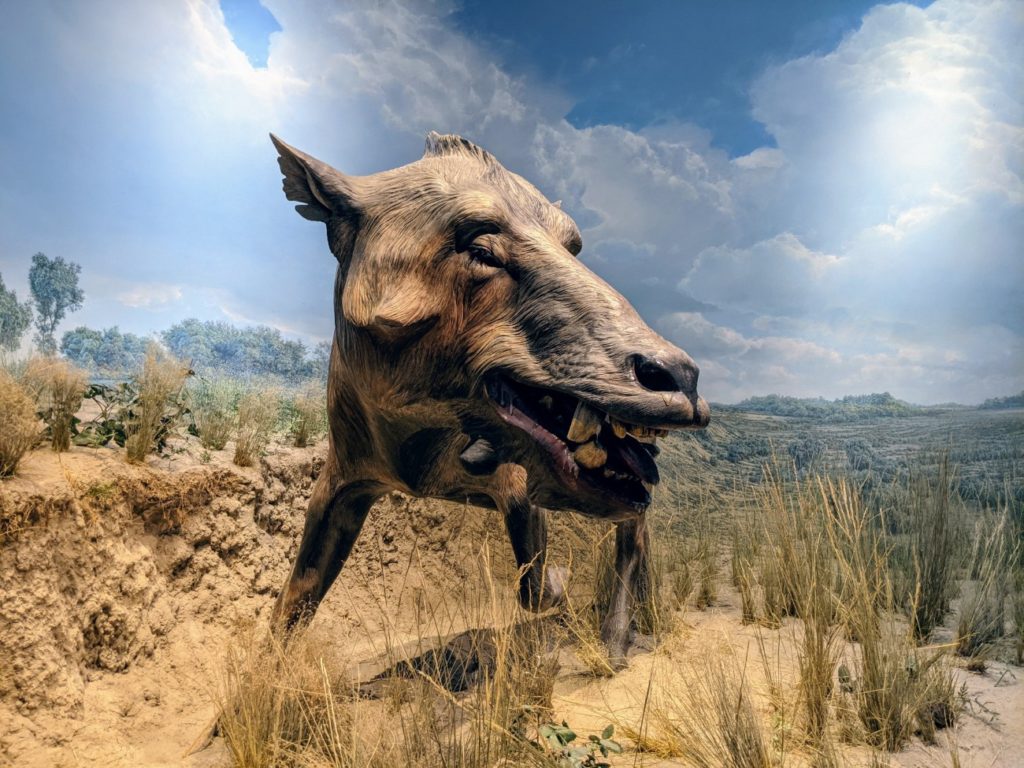
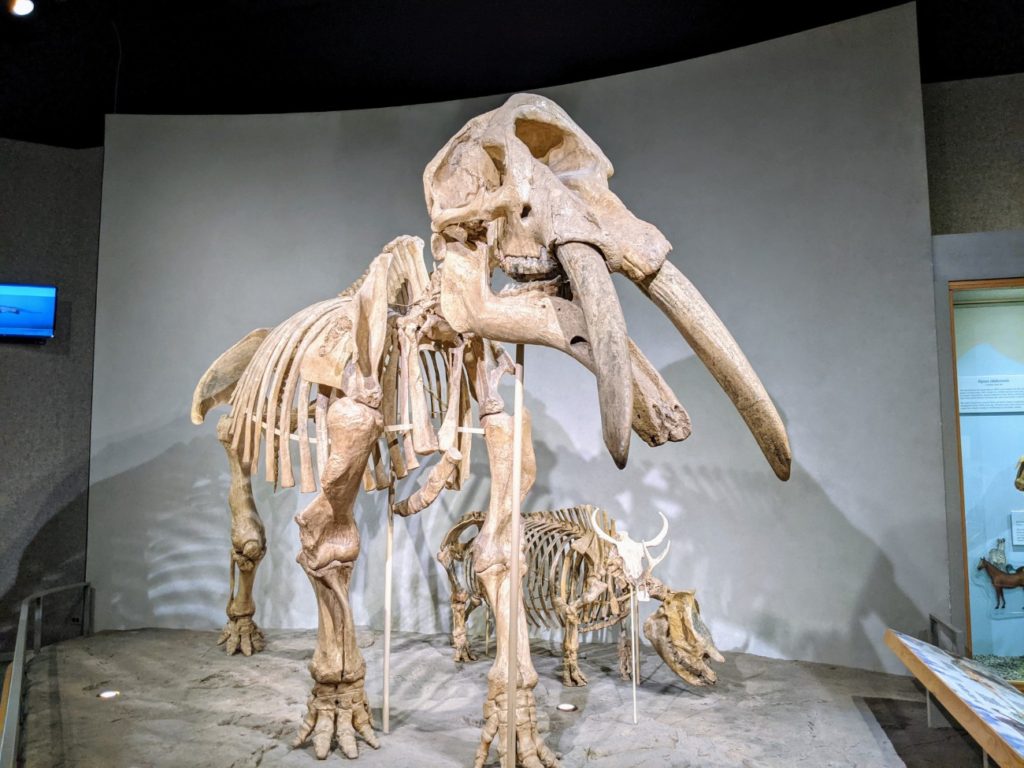
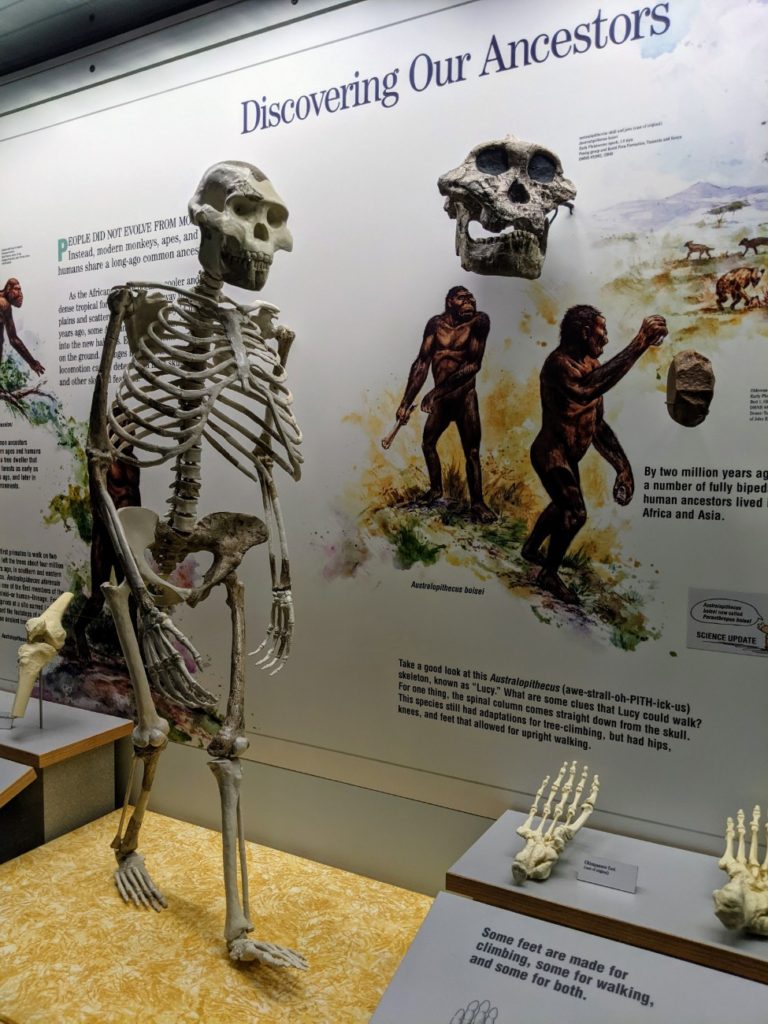
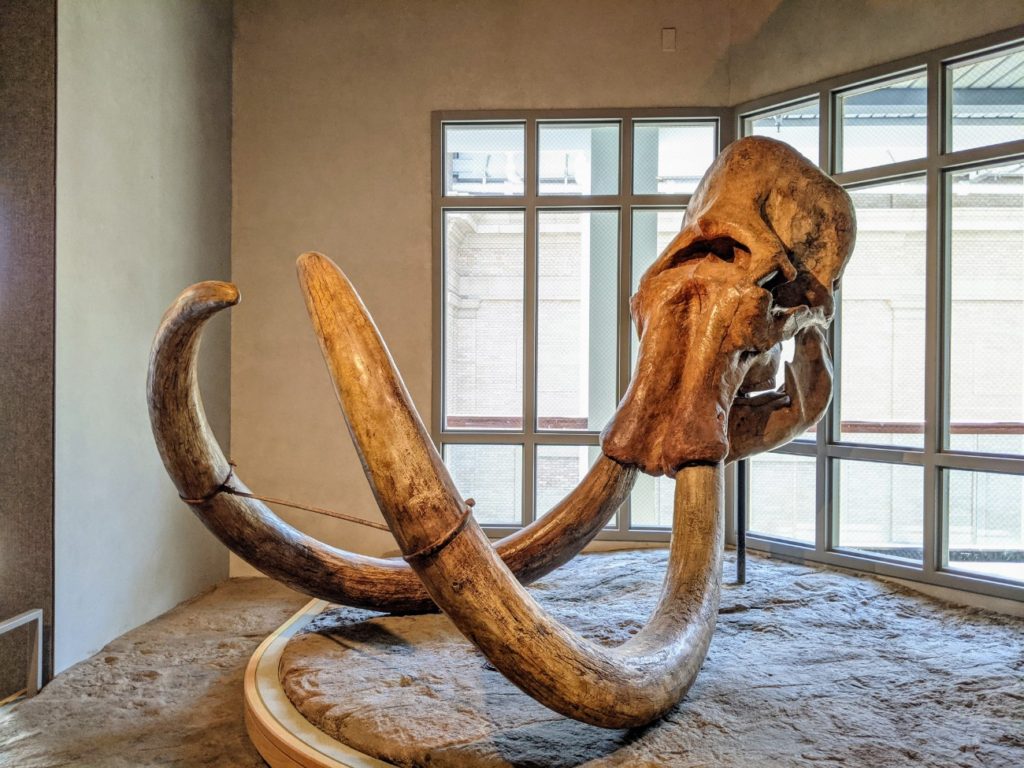
Gems & Minerals
Celebrating Colorado’s rich (haha) mining history, you follow a mine shaft on the ground floor to a series of small rooms displaying various precious stones and metals. Huge slabs of crystals and delicate shards of minerals can be found next to vaults of real gold nuggets.
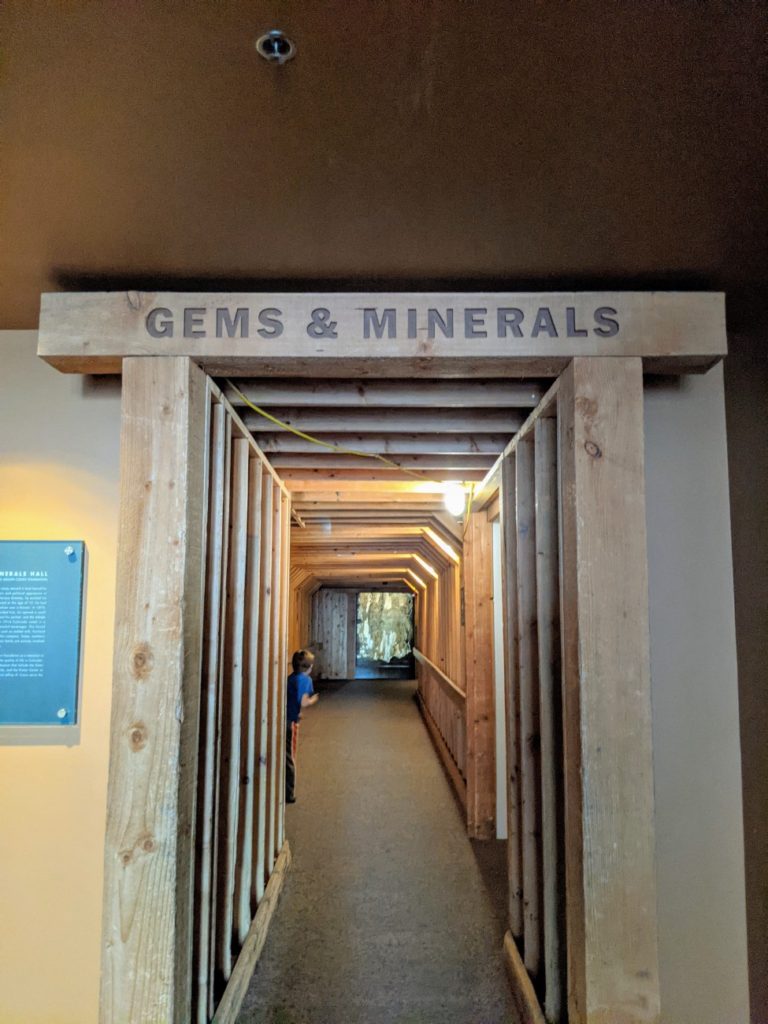
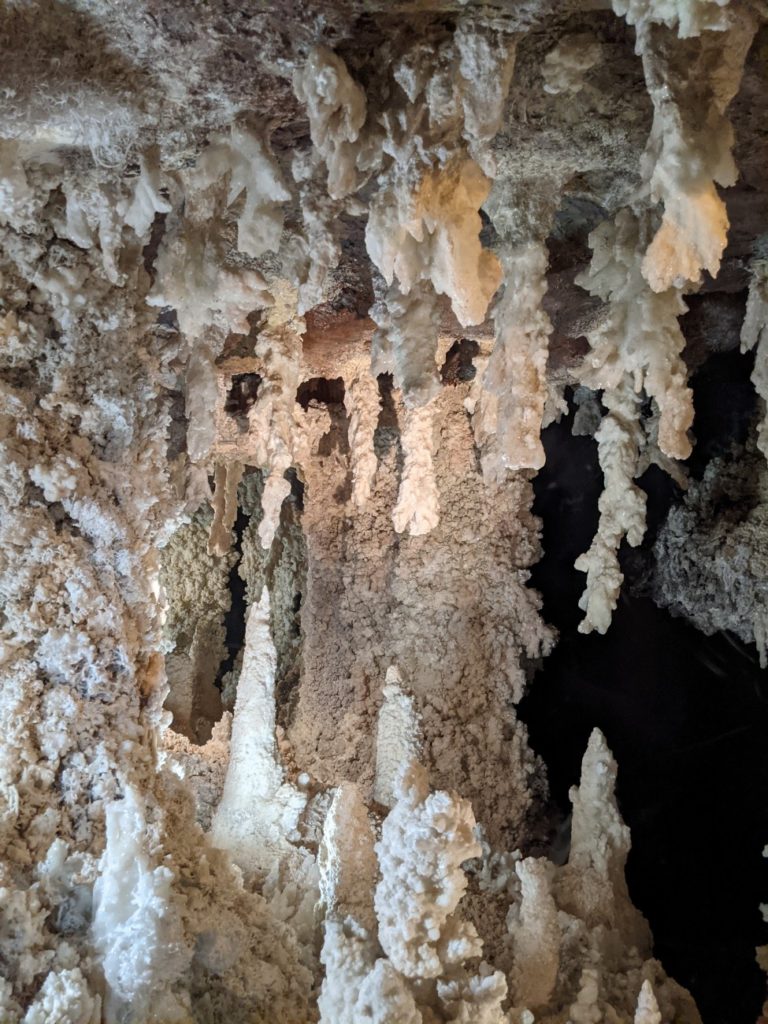
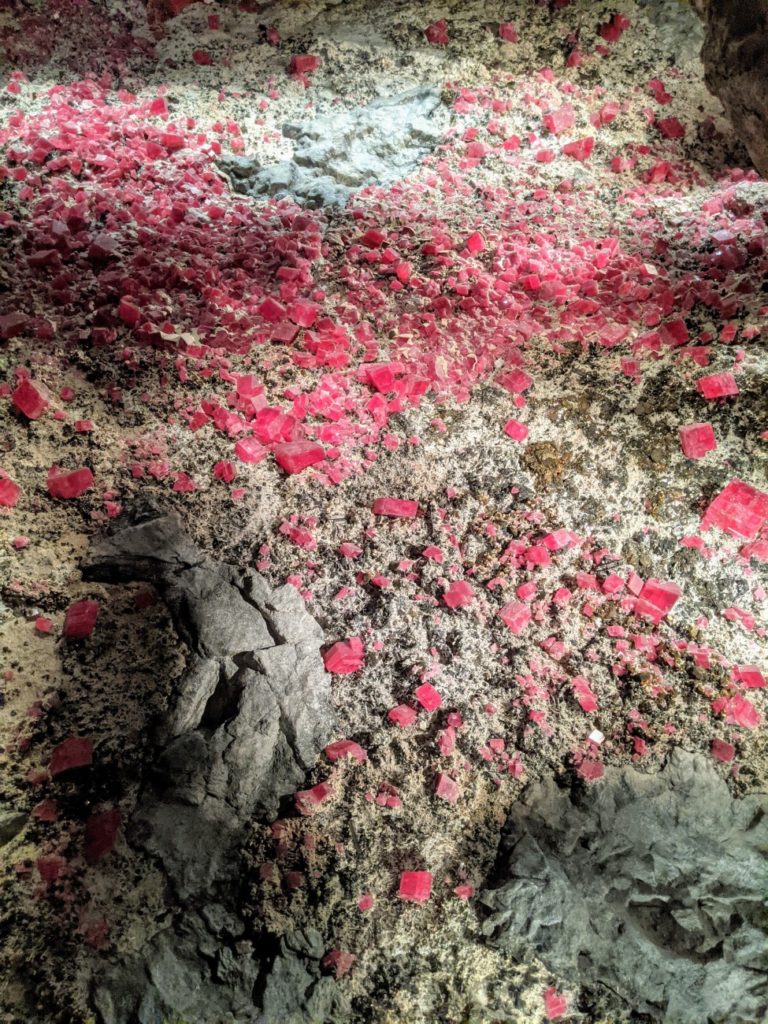
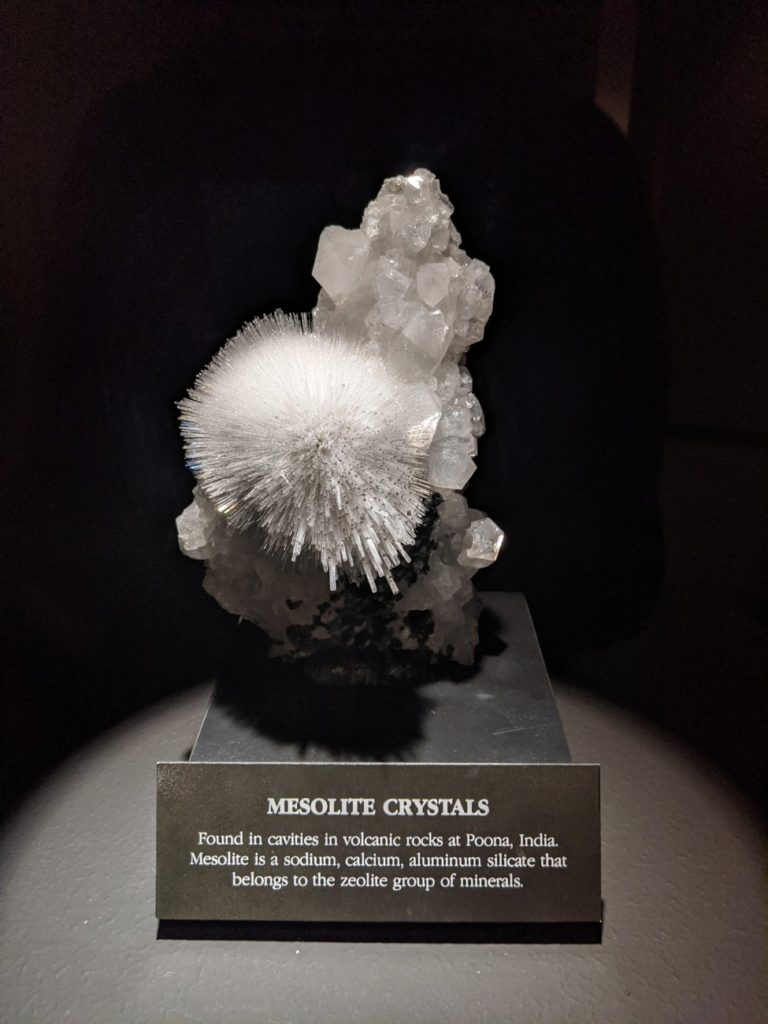
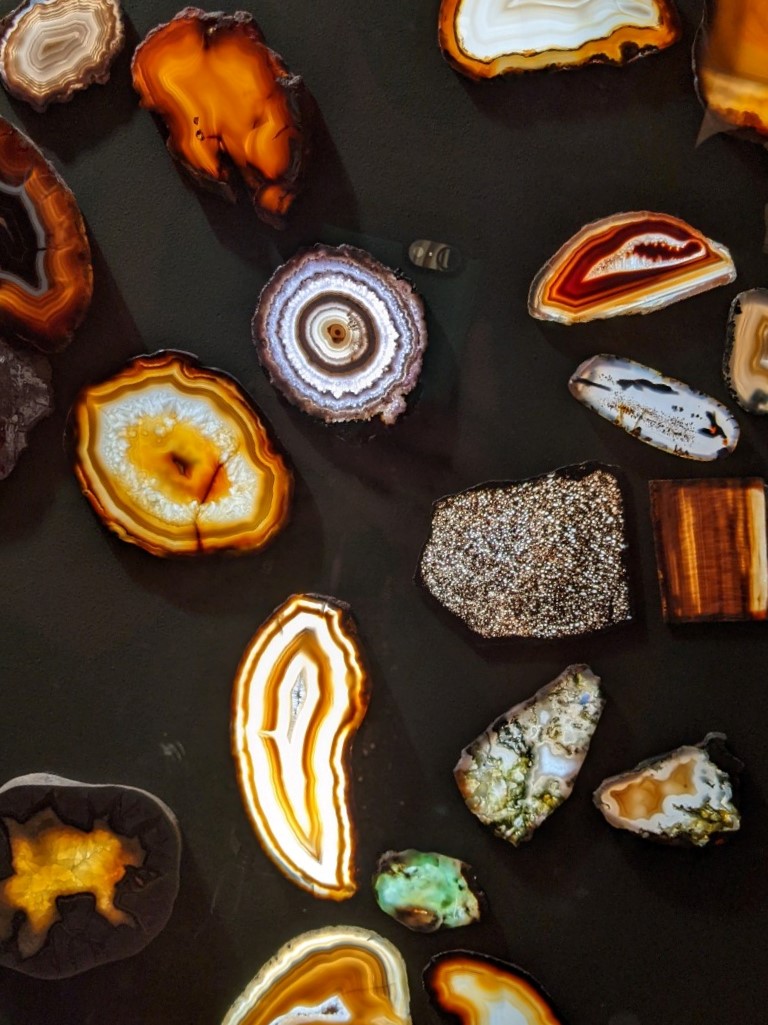
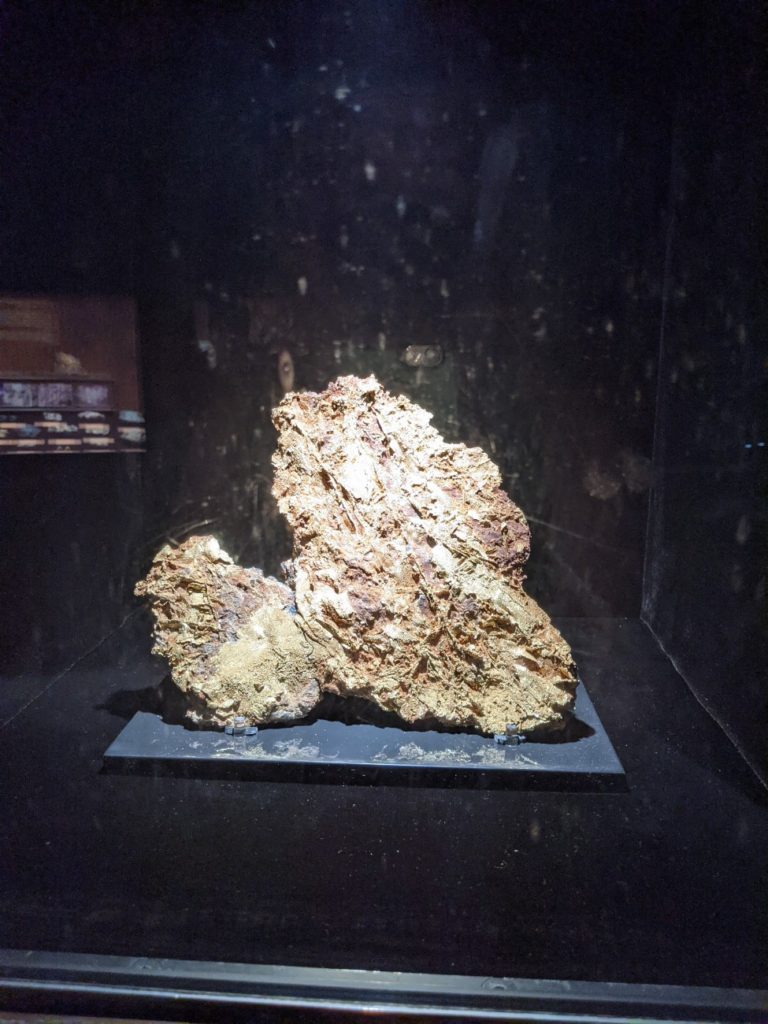
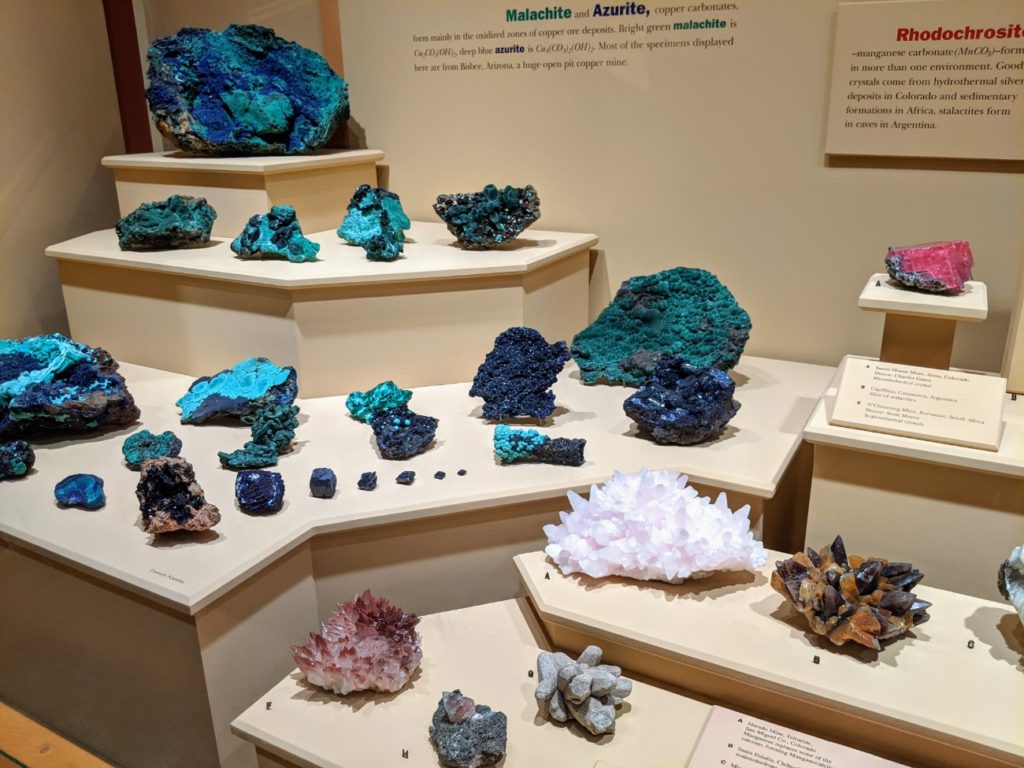
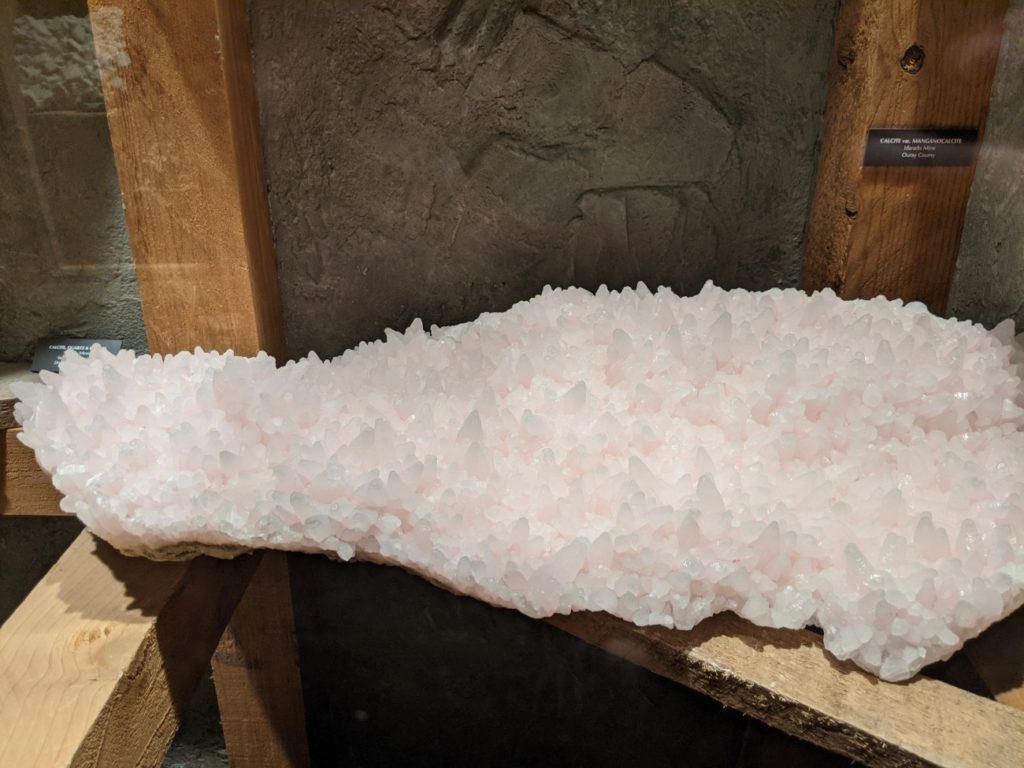
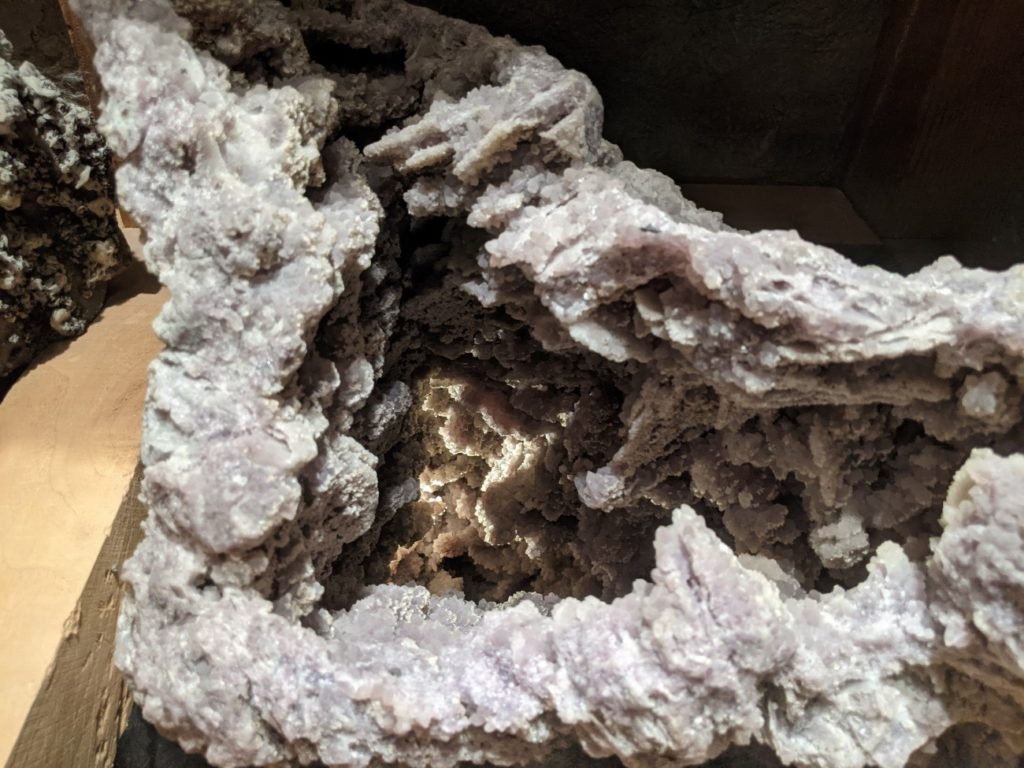
North American Indian Cultures
This gallery, found adjacent to the Wildlife Halls on the second floor, covers a quick look at all the Native American tribes, from Inuits to Navaho. I’m not sure if they get to the east and southern tribes, like Cherokee and Seminole. I don’t remember this part at all, so I must have missed it completely.
The exhibit seeks to find the commonalities of all peoples, such as the need for shelter, clothing, transportation, and food, showing examples of each.
Egyptian Mummies
One interesting room is dedicated to Egyptian mummies and features two female specimens. Modern technology like CT scans reveals what’s inside and why and how these ladies were mummified.
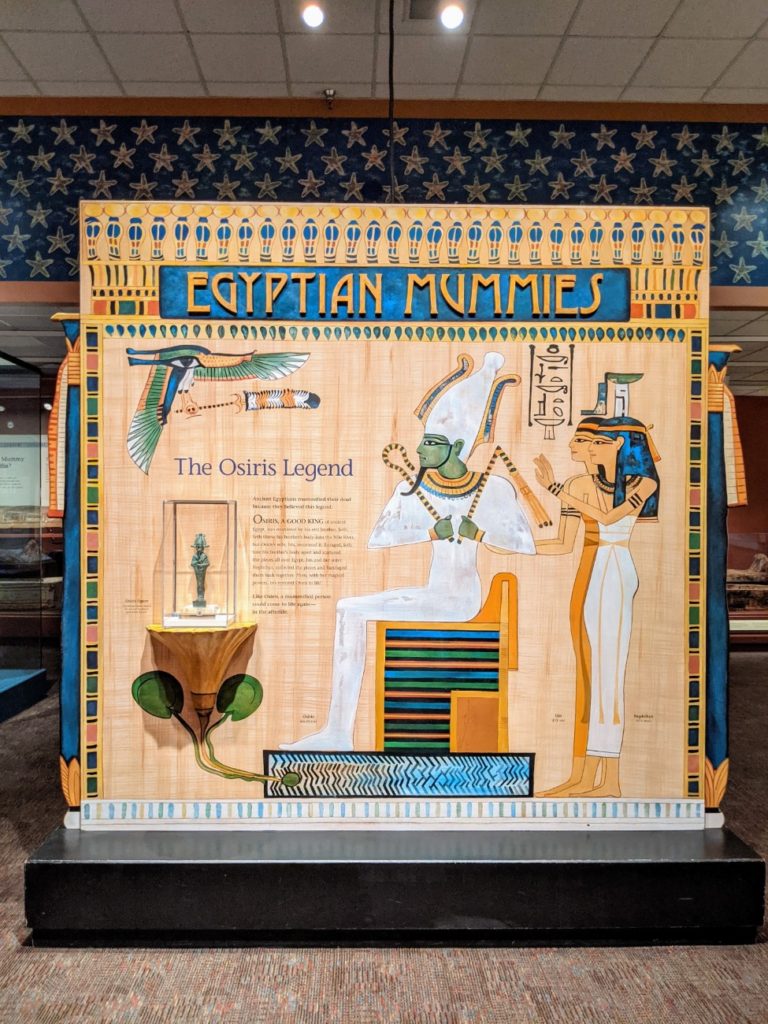
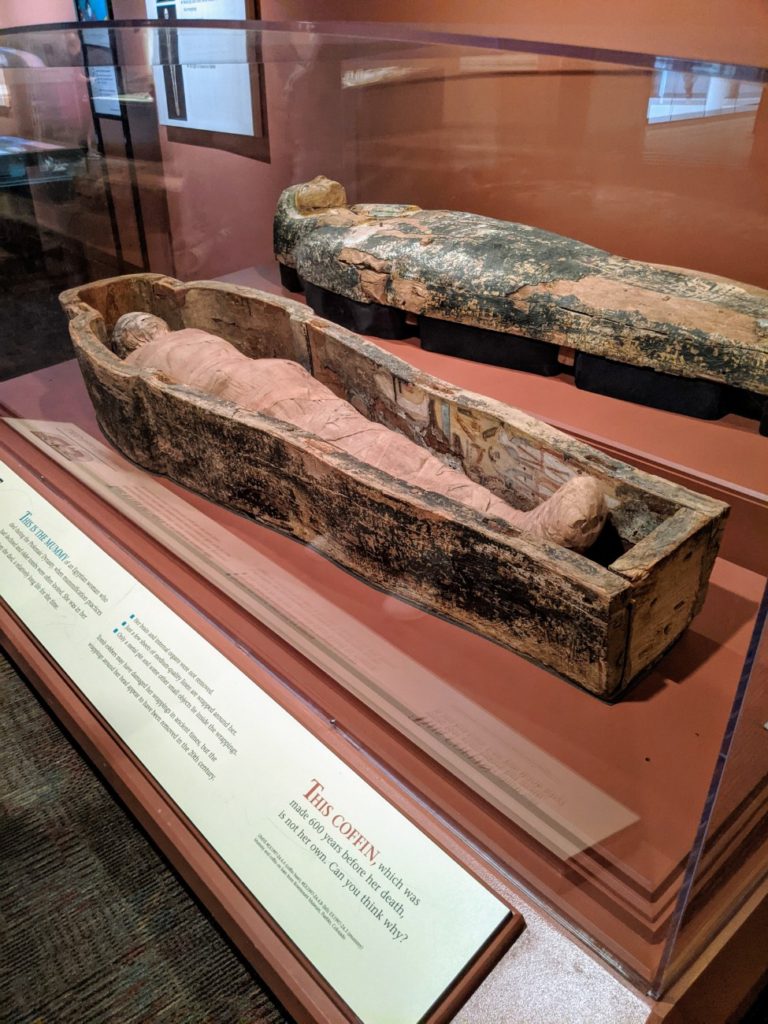
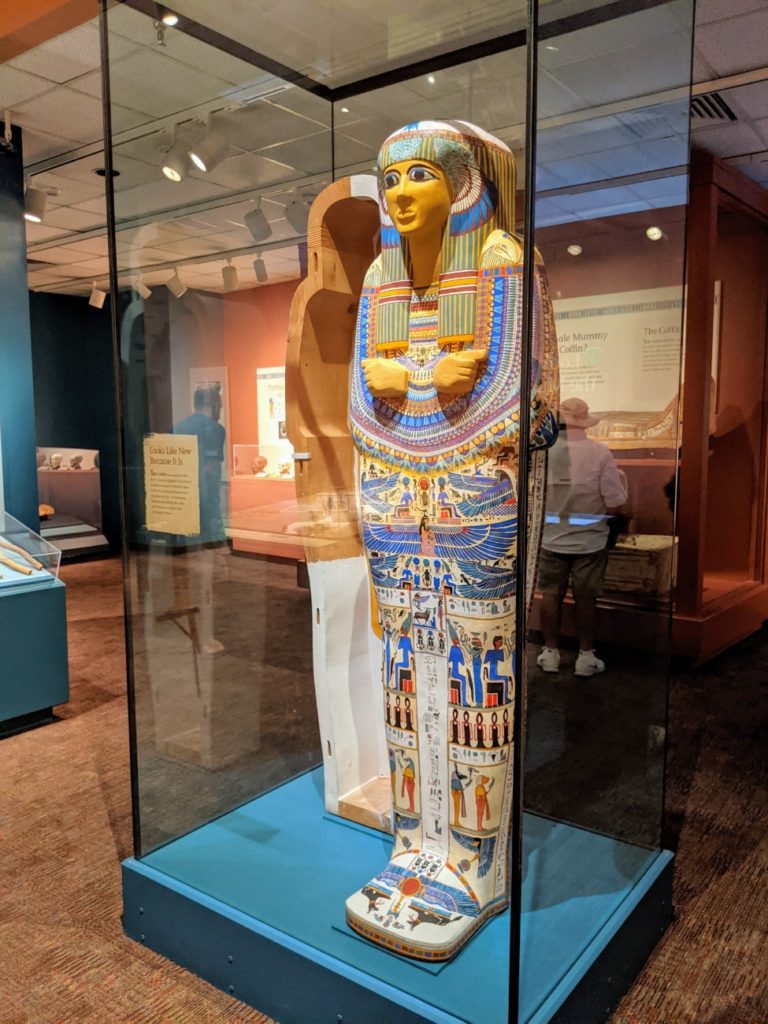
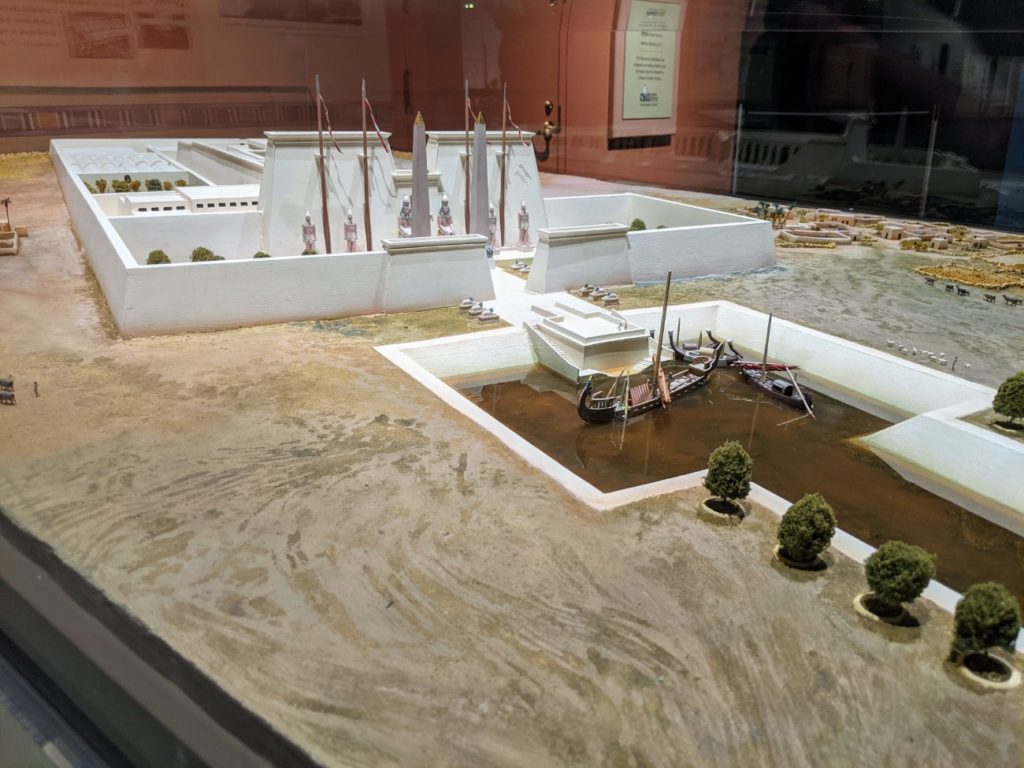
Konovalenko: Gem Carvings of Russian Folk Life
One volunteer’s favorite exhibit is this small room on the third floor featuring sculptures made from precious gems. Ukrainian artist Vasily Konovalenko carves scenes from Russian life with humor and skill. This room feels more like an art gallery, with mirrored glass cases so you can see the backs of the pieces as well. It is the only display of Konovalenko’s art outside of Moscow.
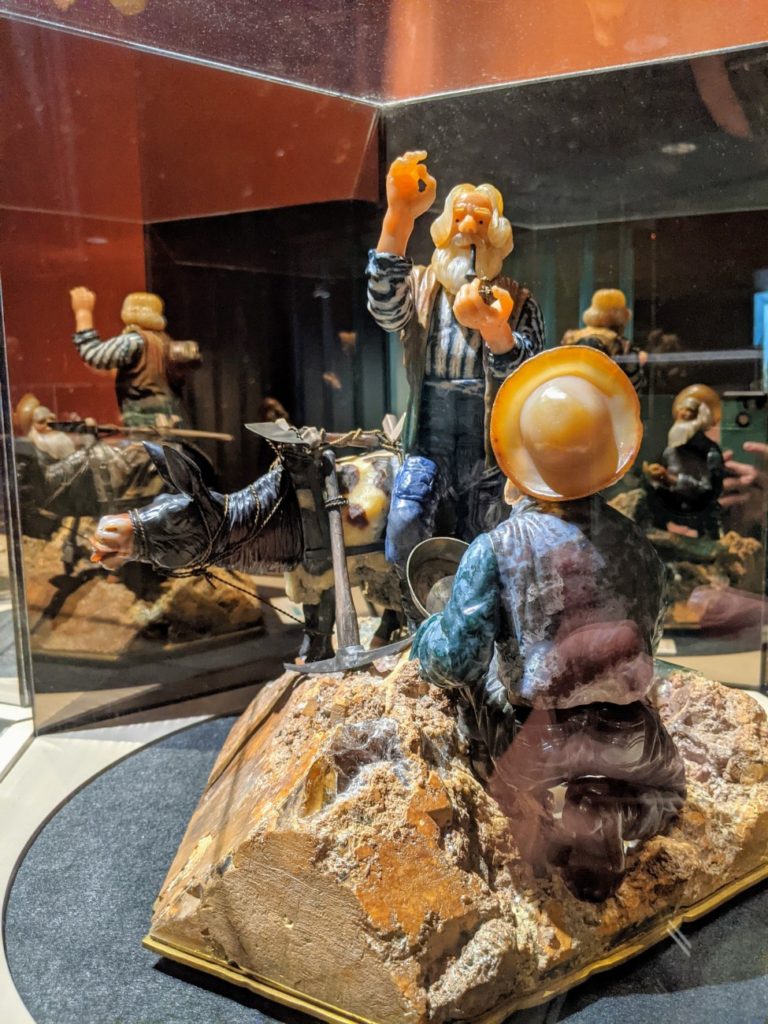
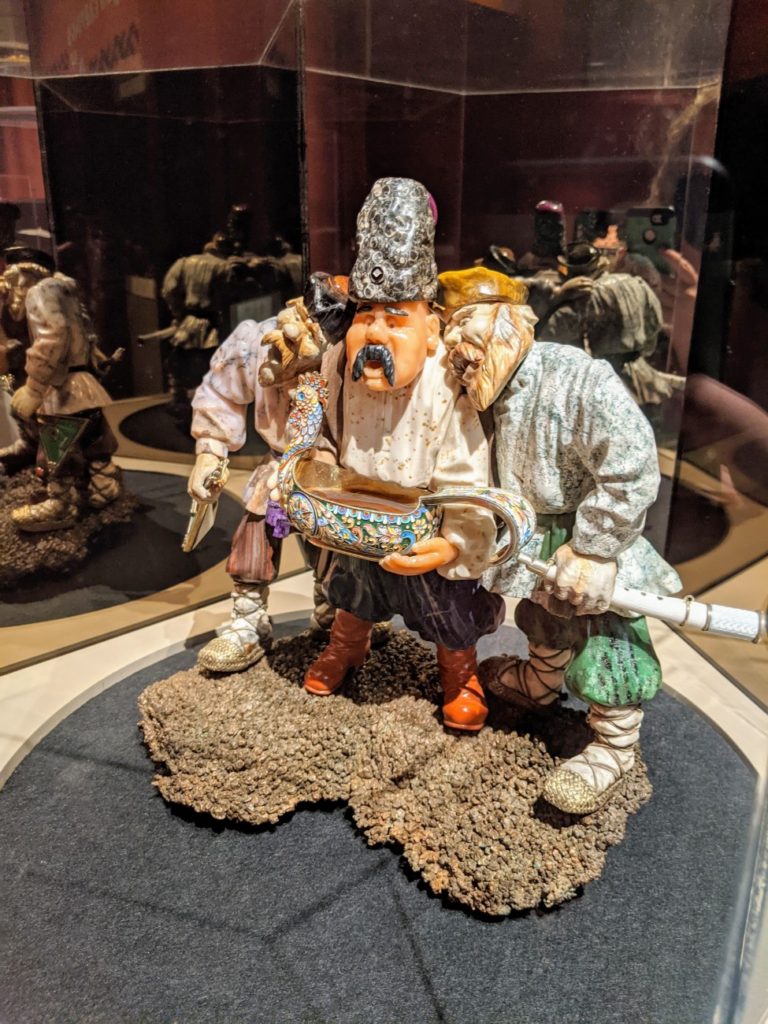
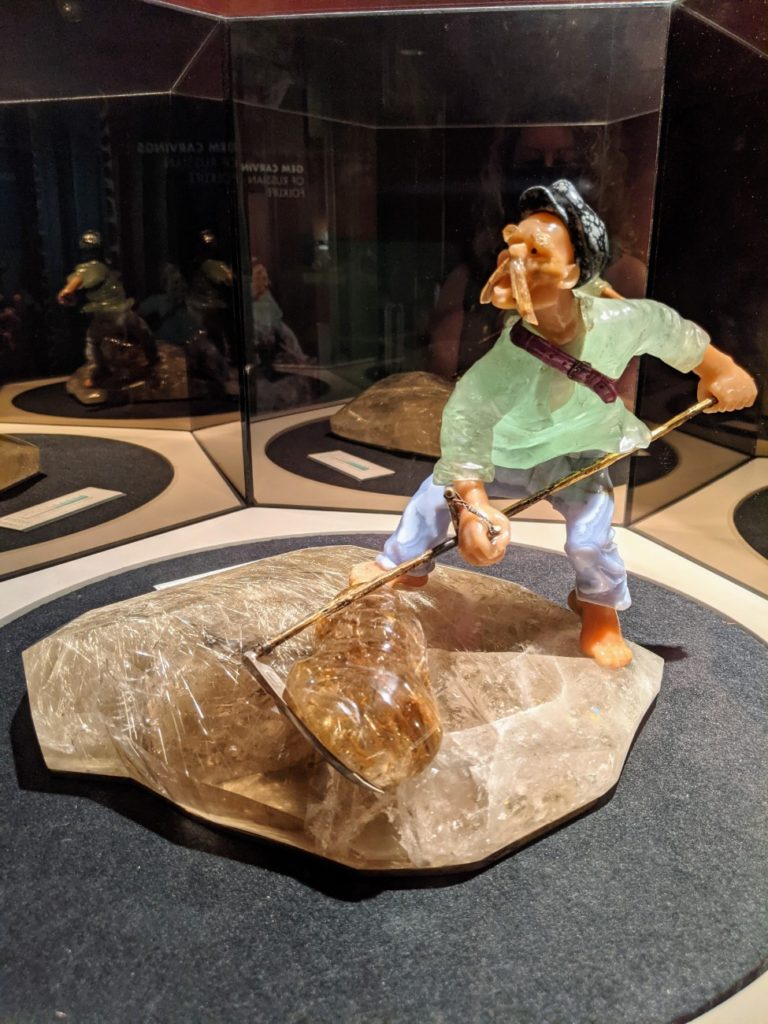
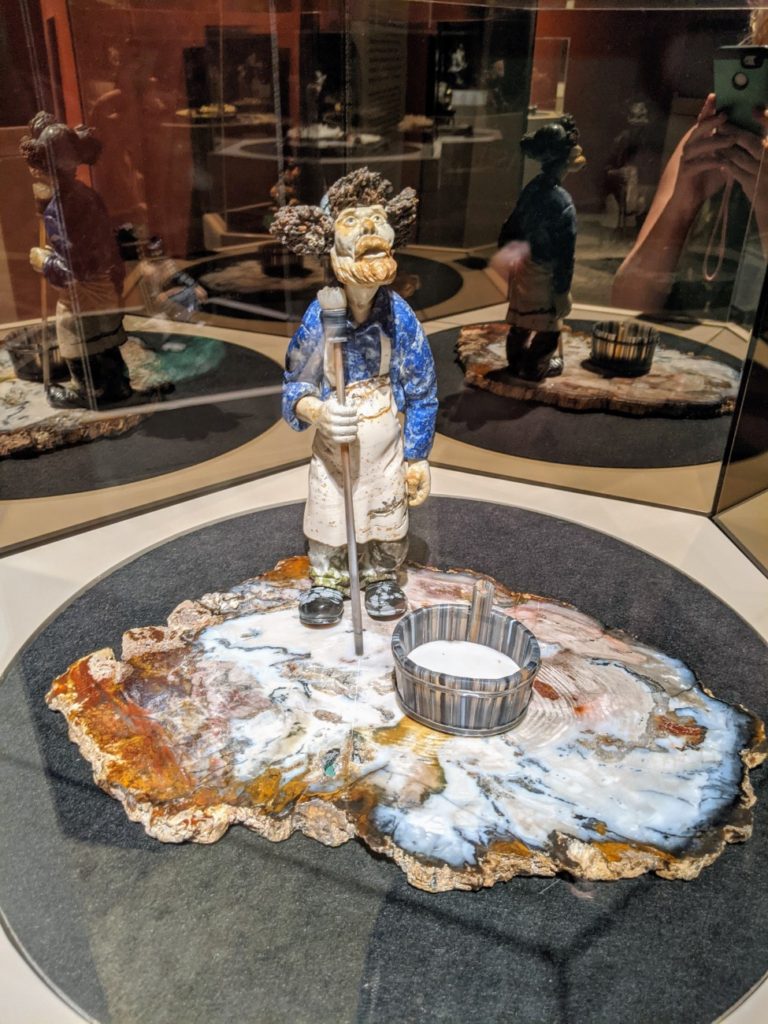
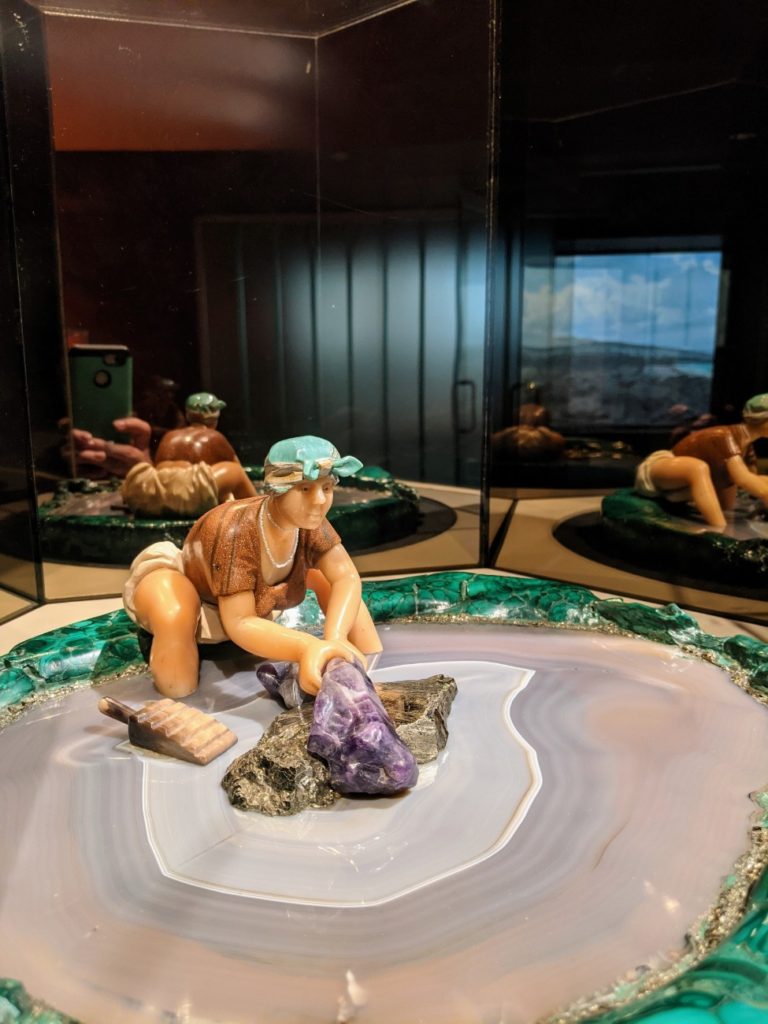
Expedition Health
Expedition Health on the second floor is an interactive study of the human body. You get a plastic card, enter some basic information, then visit several stations to test your body in various ways. You might walk across a floor-level balance beam or wave your arms in front of a projection showing your skeletal, nervous, or muscular systems. At the end, your card will give you the results of your tests.
I was particularly interested in a large display in the middle of the room depicting two mountain climbers. One man as a skeleton helps up another that is only muscles. Another cool display shows all the blood vessels in one arm.
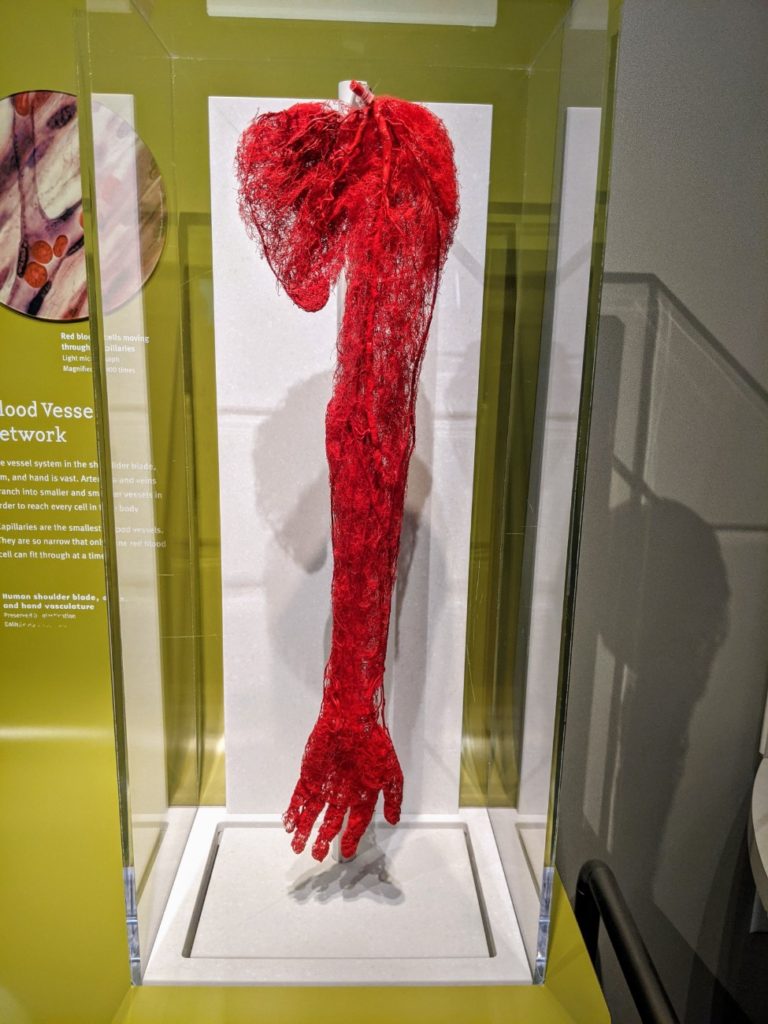
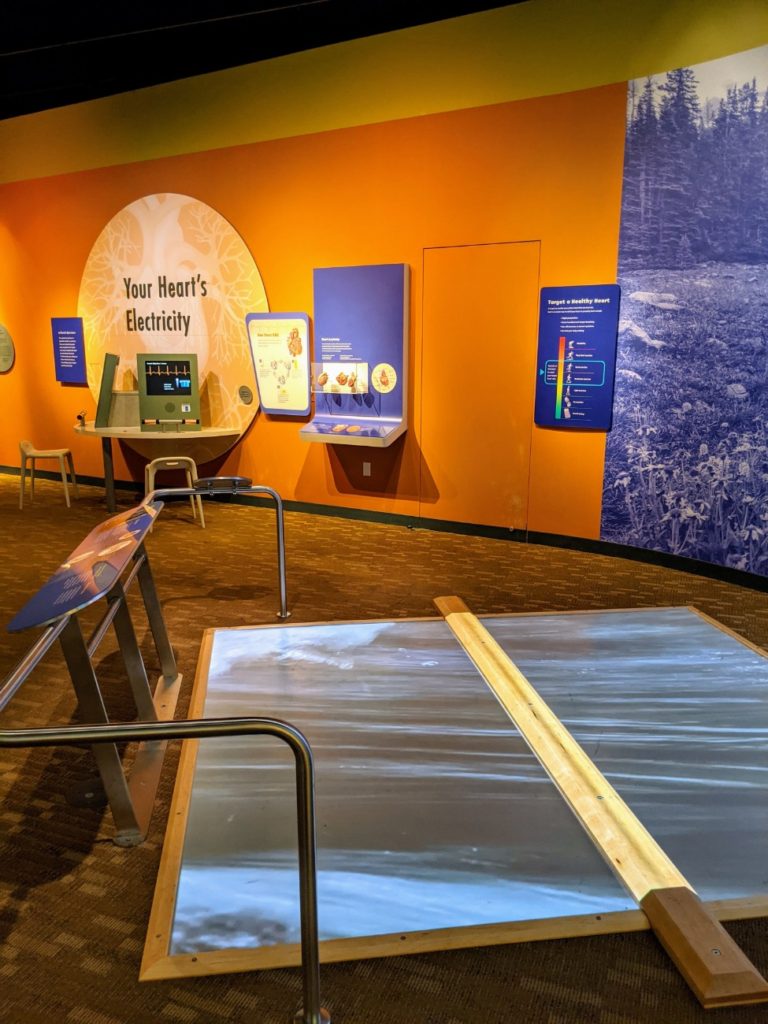
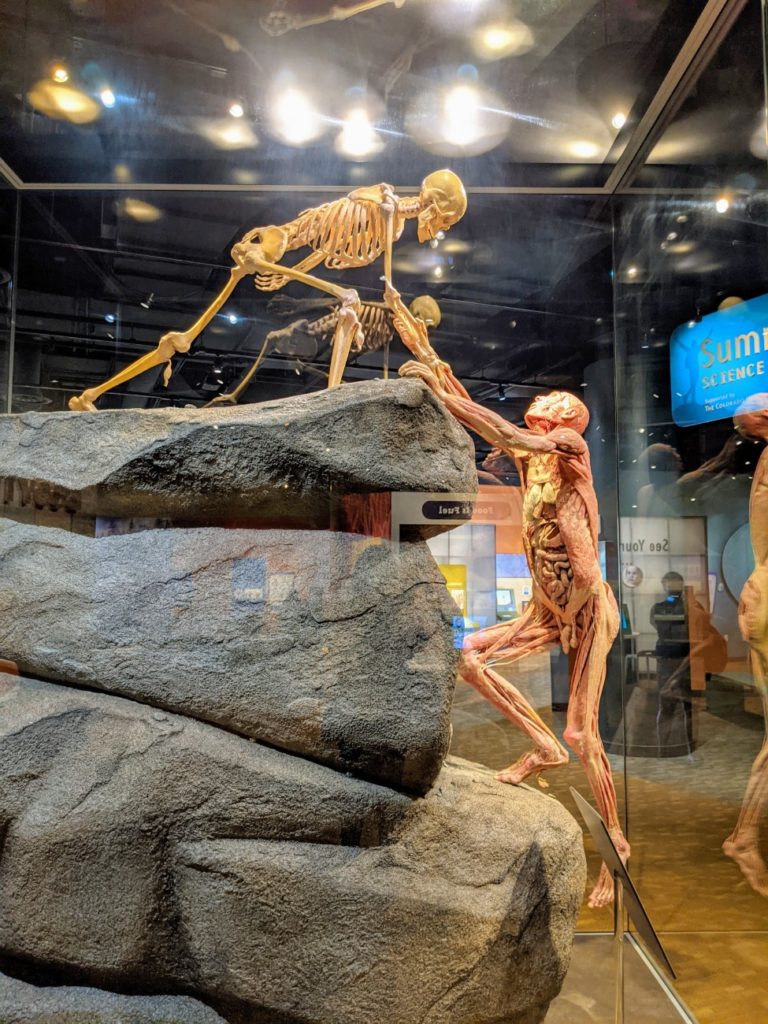
There also seems to be a genetics lab attached to this area. I don’t remember this part, so it may not have been operating during my visit. You can find Expedition Health on the second floor.
Space Oddessy
One of the more popular areas with kids is Space Oddessy on the ground floor. I didn’t look around here too much and took even fewer pictures, due to how crowded it was. (I try not to take pictures of other people’s kids.) It looks really cool, however, though you may want to either hit it early in the day to experience fewer crowds.
There are a lot of interactive features like walking in fiber-optic “space,” driving a rover on Mars, making Hubble space pictures, hearing indigenous stories of space, and crashing rockets to make as big a crater as you can. Somewhere in here is a disco ball for you to find! No wonder it’s crowded.
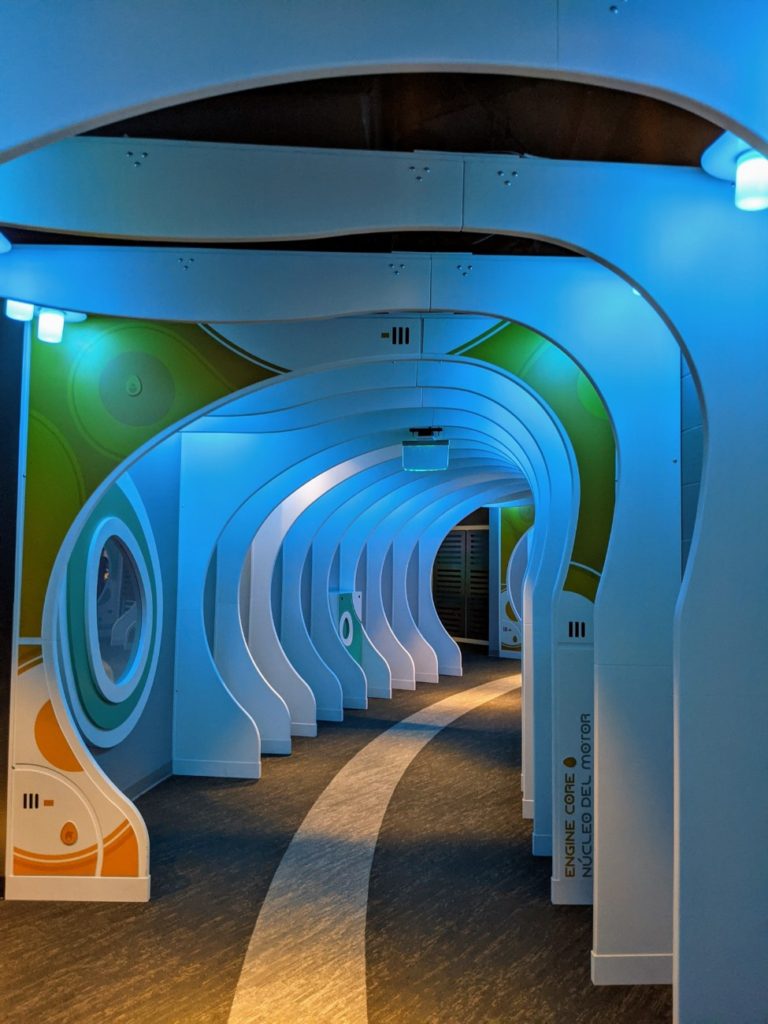
Discovery Zone
Another interactive space just for kids had reopened recently. Discovery Zone offers young visitors to play in various environments including a cloud play area, a water play trough, an experimental kitchen, backyard science, and construction areas.
Temporary Exhibits
Besides all the permanent exhibits, there are temporary exhibits available for limited dates. Some require an extra fee above the general admission fee.
Stonehenge (past exhibit)
During my visit, I paid extra for a fascinating exhibit on the building of Stonehenge in England. Video screens, models, and life-size depictions brought the building of it to life. This is a traveling exhibit, and while I can’t tell where it is right now, it might pop up at your local large museum.
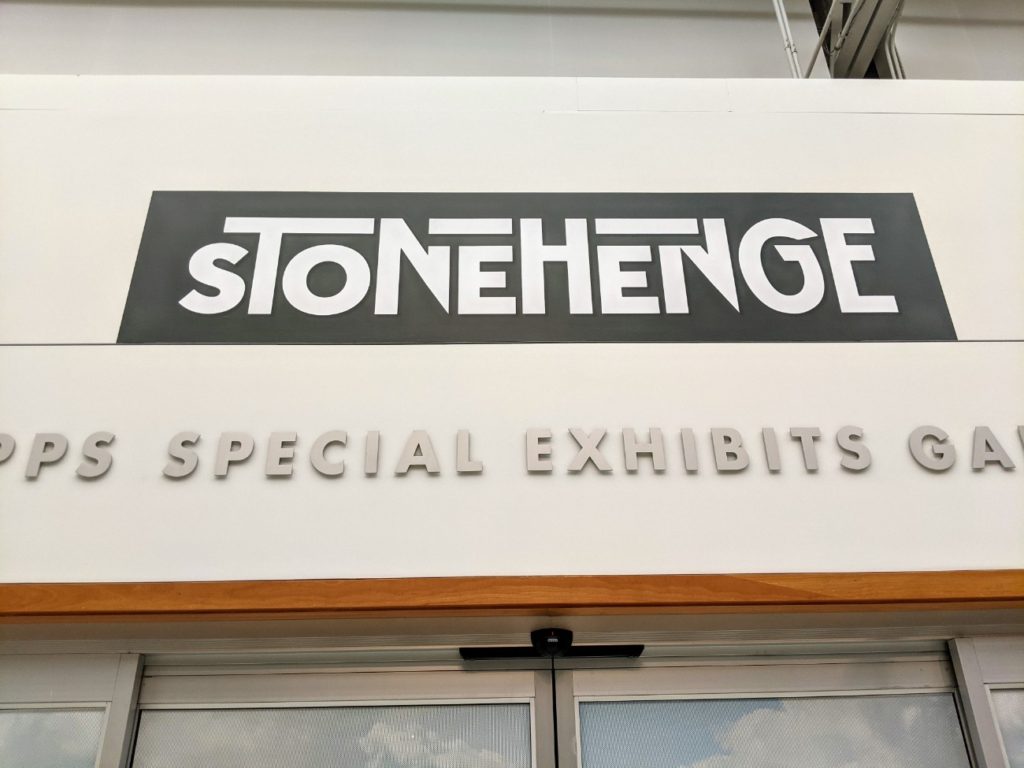
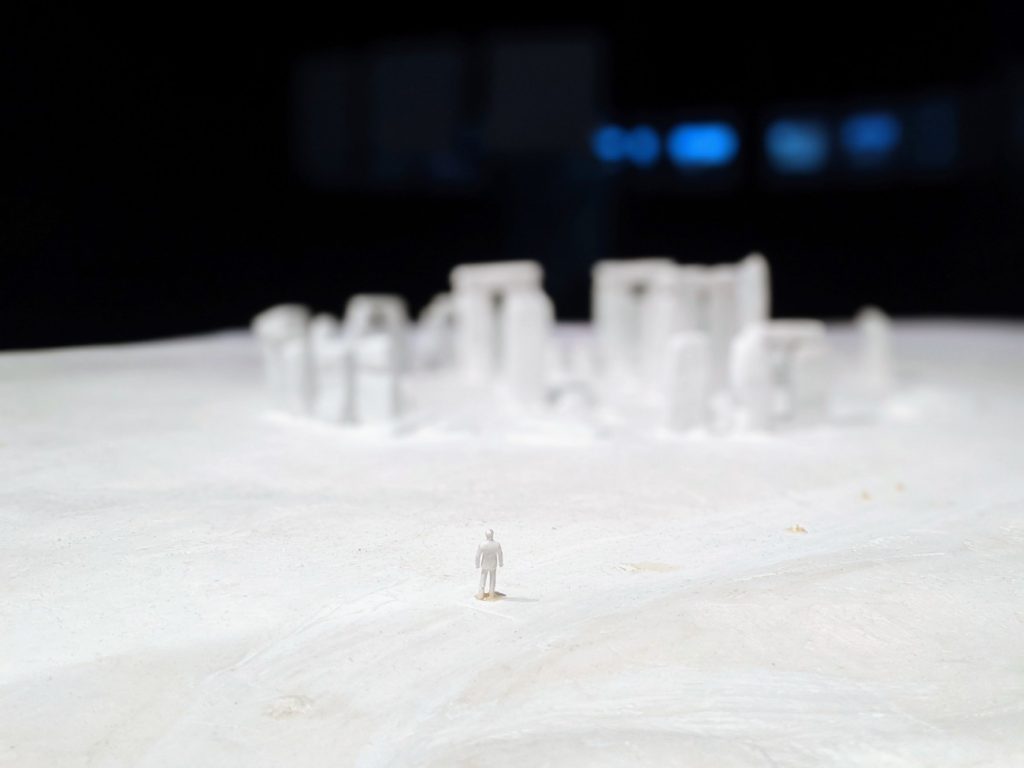
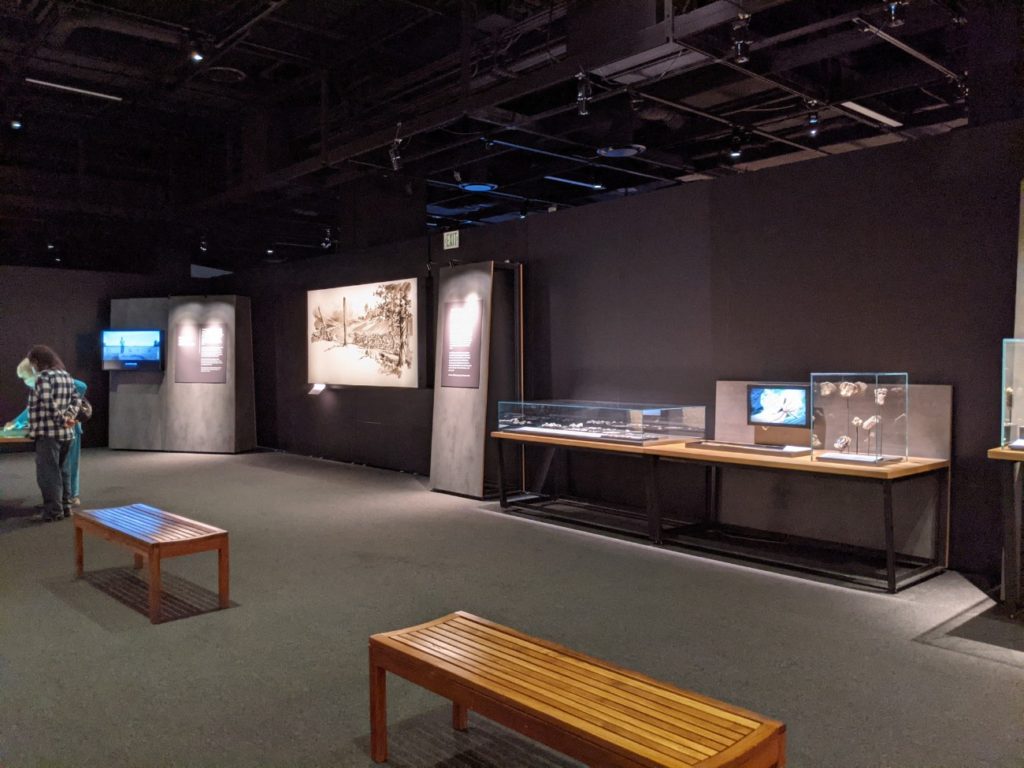
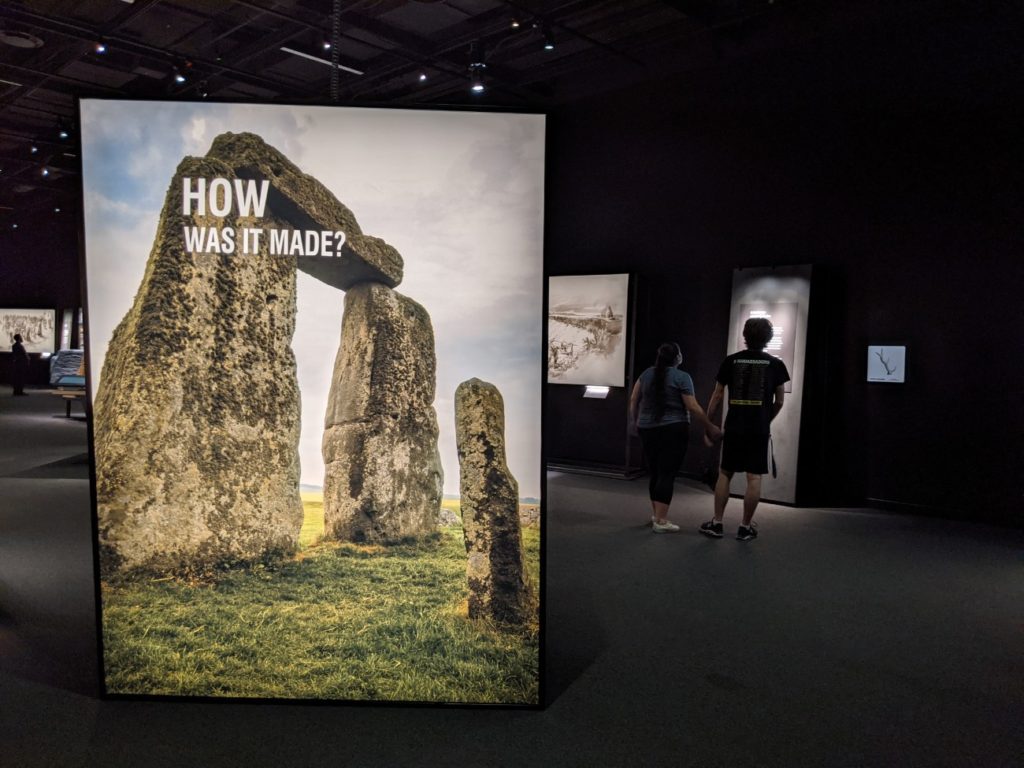
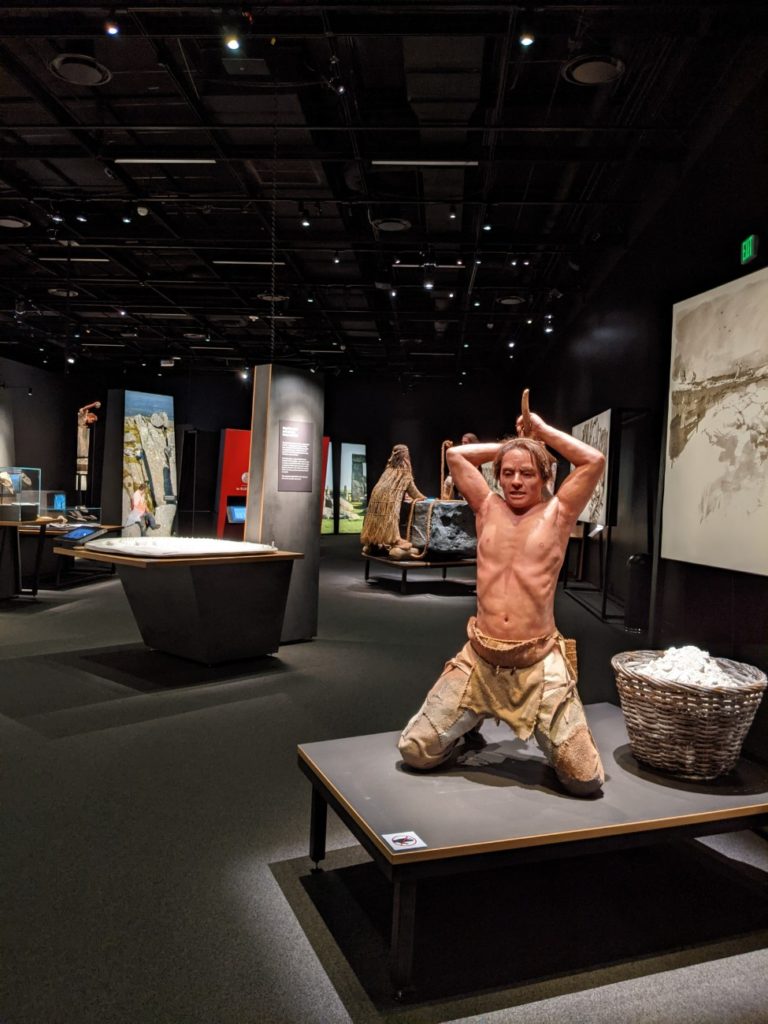
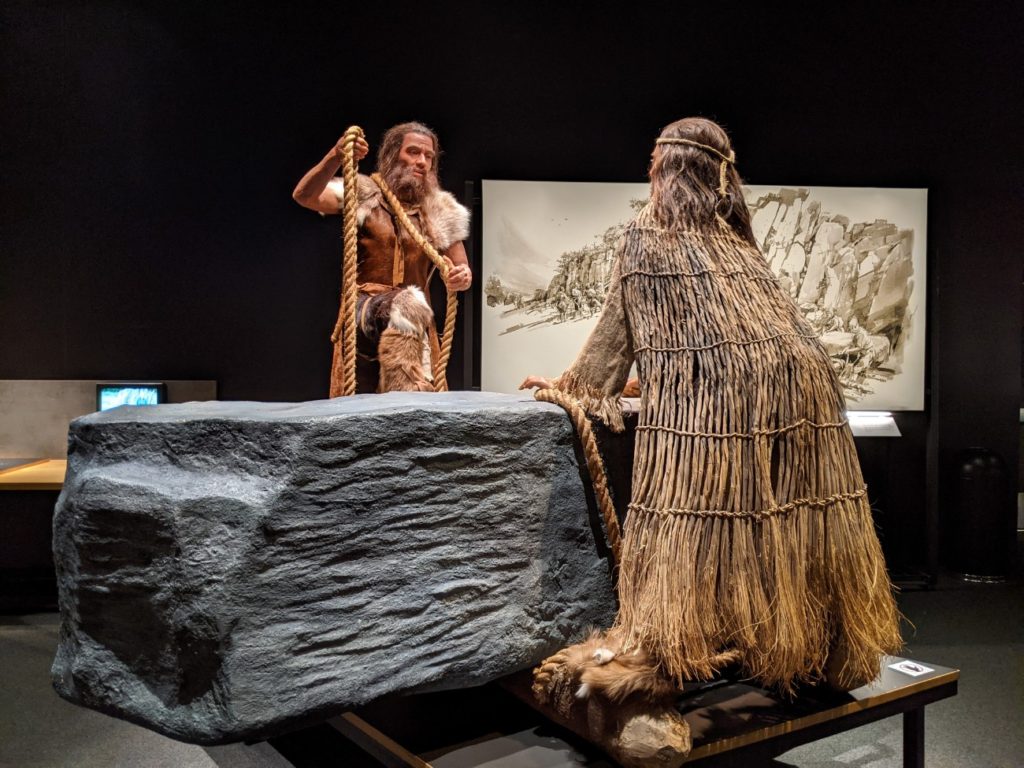
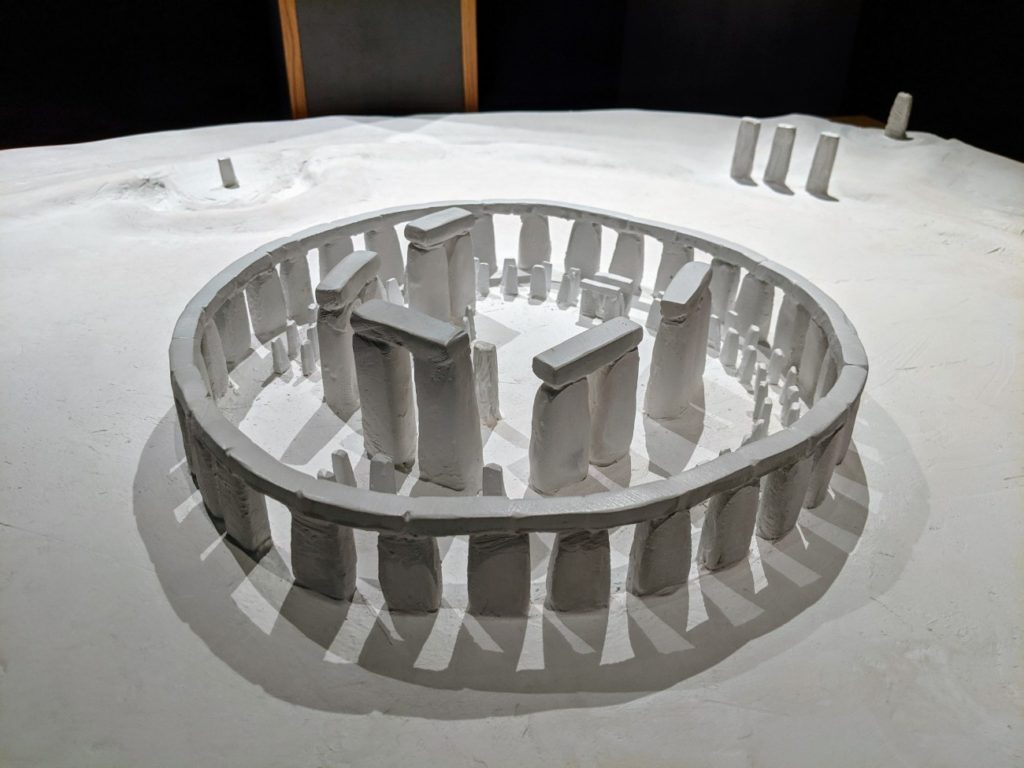
After the Asteroid
Along the corridor back to Space Oddessy on the ground floor is another volunteer favorite, a room that details how the earth bounced back from the asteroid hit that wiped out the dinosaurs millions of years ago. There’s a neat video about the archaeological dig in Colorado Springs and several cases with fossils found at the site.
This exhibit is free with entry to the museum. It’s listed under temporary exhibits, but there is no closing date listed.
Guitar: The Instrument that Rocked the World
A new (since my visit, at least) exhibit features the history and science of the guitar, “the instrument that rocked the world.” Hands-on exhibits explore topics like the mathematics of scales and sound waves. And over 70 instruments on display show the evolution from primitive to outlandish. You can even play the world’s largest playable guitar, over 40 feet long!
Admission to the guitar exhibit is included in general admission. It closes on April 17.
Egypt: The Time of the Pharaohs
It looks like the Stonehenge exhibit space is being converted into a Pharaoh’s tomb with Egypt: The Time of the Pharaohs, opening on February 25. The exhibit will feature over 350 artifacts, some thousands of years old. There will be hands-on elements, videos, animations, and even a 3D hologram of a mummy!
The cost to view the Pharaoh exhibit is $9.50 above the cost of general admission to the Denver Museum of Nature & Science. You will need a timed ticket for both the exhibit and general museum entry. Members can enter the special exhibit for $7.50 per adult and $6 per youth or senior.
Gates Planetarium
There are currently five planetarium shows in the ground-floor Gates Planetarium. They’re all scheduled through March 23, 2022, though there are no replacement shows listed as “upcoming” yet. All planetarium shows carry an additional cost above general admission or membership – $5 for adults, $4 for youth 3-18, and $4 for seniors 65 and over.
Black Holes is a 37-minute show from 2006, narrated by John de Lancie of Star Trek: The Next Generation fame. I saw this same show at the South Carolina State Museum, and it’s a little dated. This film is also shown in Spanish.
Cosmic Journey is a 25-minute show from 2010. It’s a quick zip around our solar system, visiting the moons, volcanos, and neverending storms on our neighboring planets.
One World One Sky: Big Bird’s Adventure is a 27-minute show aimed at smaller kids. Big Bird and his new Chinese friend Hu Hu Zhu share what they can both see in the sky.
Destination Solar System is a 30-minute show from 2014 but set in the year 2096 when space tourism is popular and common. Your hapless guide Jesse and the onboard computer Max jump through space to visit an asteroid belt, the moons and rings of Saturn, and even the sun!
Dynamic Earth, narrated by Liam Neeson, is a 24-minute show from 2014. In it, viewers coast on waves and wind currents, find themselves in the middle of a hurricane, visit sharks and whales, and fly into a volcano. This show is also presented in Spanish.
Phipps IMAX Theater
On the second floor is Phipps IMAX Theater, featuring two 40-ish minute 3D movies. Each movie costs $7 per adult and $6 for youth 3-18 and seniors 65+. This is above the cost of general admission or museum membership.
Great Bear Rainforest is a 2019 nature film narrated by Canadian actor Ryan Renolds. In it, he introduces us to the bears, otters, and wildlife found in the Pacific coastal rainforest in Canada, including the rare all-white spirit bear. This movie is scheduled through March 23, 2022.
Wings Over Water is the new film narrated by Michael Keaton. Follow three bird species – the Sandhill Crane, the Yellow Warbler, and the Mallard Duck – on their migratory patterns and behaviors, all dependent on wetlands for their survival.
Wings Over Water just premiered on Jan. 13 but also has an “available through” date of March 23, 2022, like every other show. I can’t imagine they’re replacing every movie on that date, so maybe that’s just as far as they have planned out.
Virtual Reality Experiences
It seems like there are perhaps two stations for Virtual Reality (VR) experiences. I’ve noticed one in reference to the Space Oddessy area, and the museum map shows a “Birdly Virtual Reality Experience” but none of those seem to be operating currently.
There are several virtual learning experiences to be had, mostly in terms of watching a talk from your home computer or playing a game.
Sky Terrace
The Denver Museum of Nature and Science sits on the edge of Denver’s sprawling City Park. And if you make your way through the Wildlife Hall back to the glass atrium, there is an elevator up to the fourth floor and the Sky Terrace. From the terrace, you get a panoramic view of the park, a fountain, and lake, and a historic pavilion in the distance.
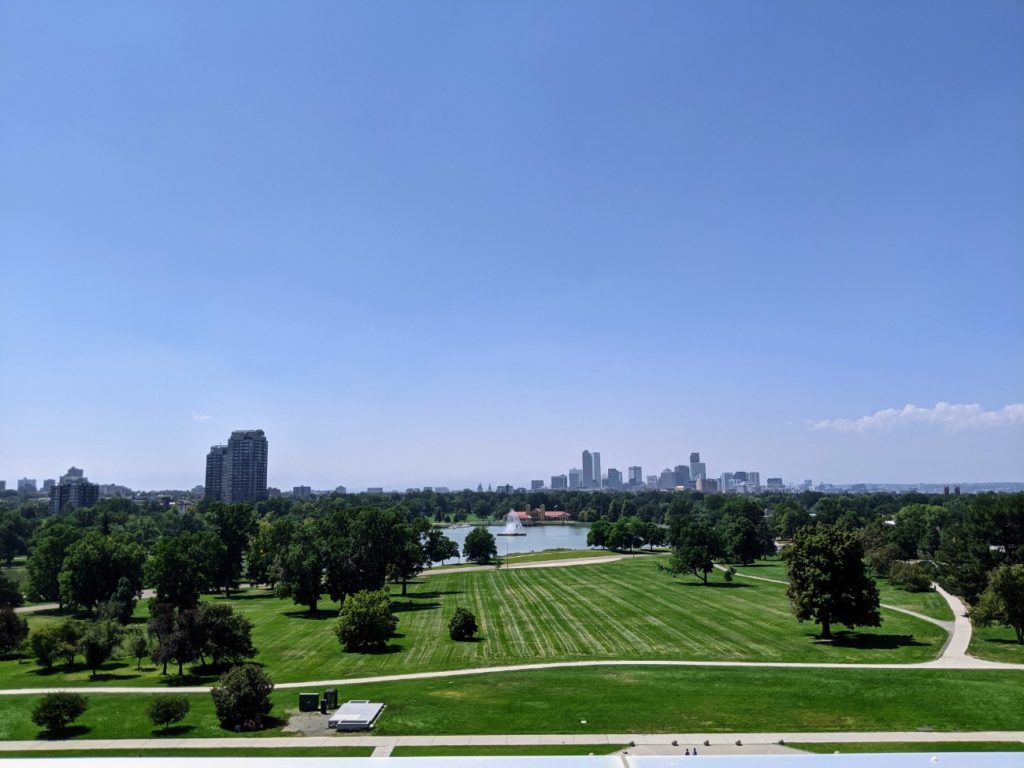
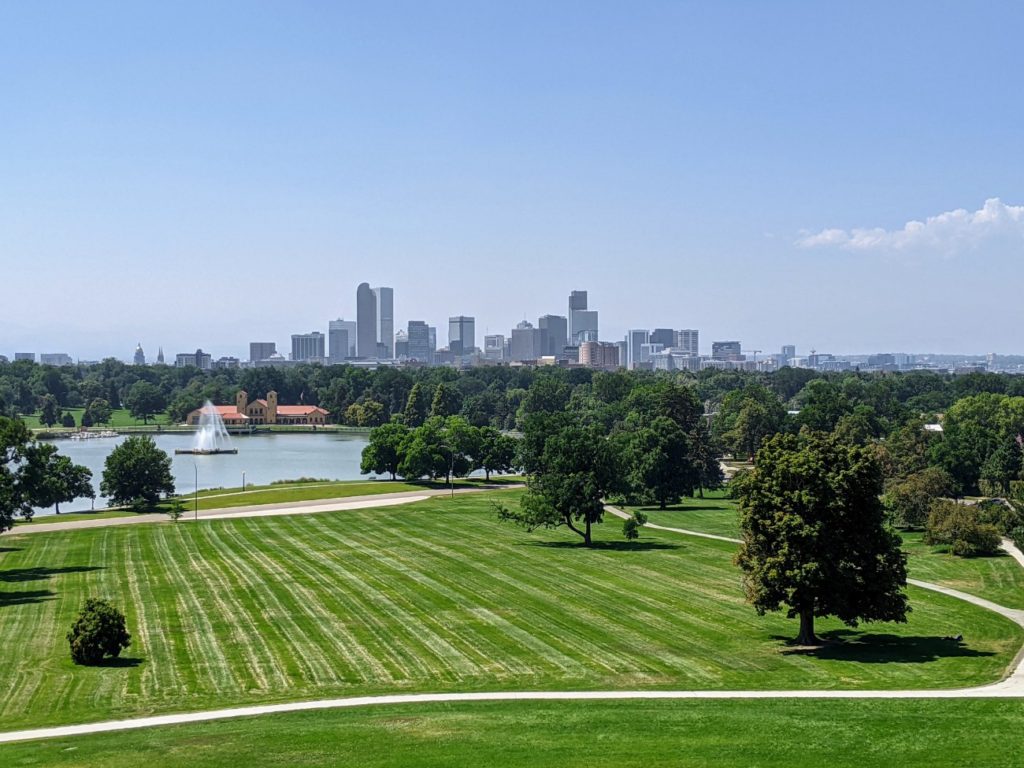
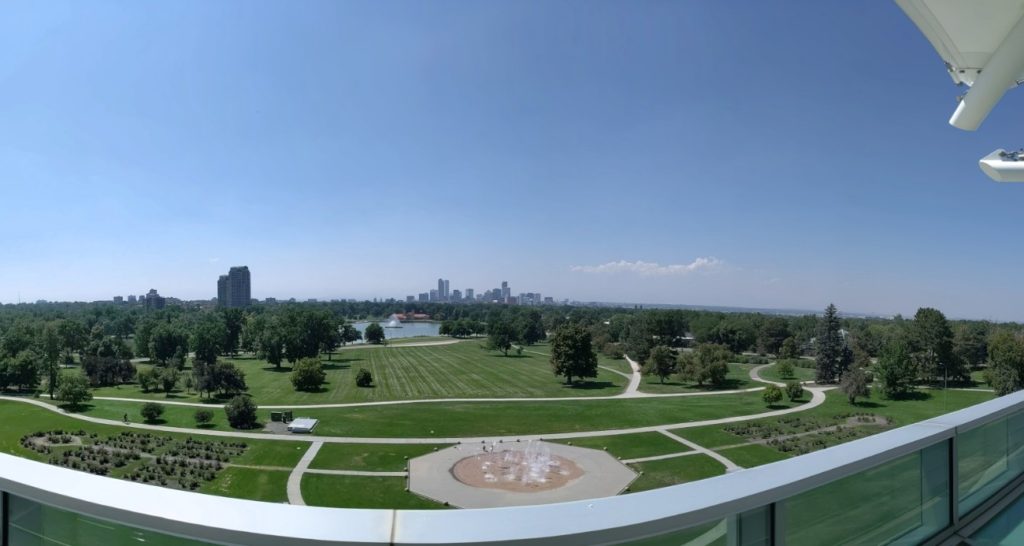
Food Hall
Meals during your visit are easily covered in the sunny food hall. An espresso bar is open from 9 am-2 pm, a grab-and-go snack spot from 9 am-4 pm, and a hot foods cafeteria from 11 am-2 pm. I’m not sure if the food options are open later on the Fridays they stay open longer, but I imagine they are.
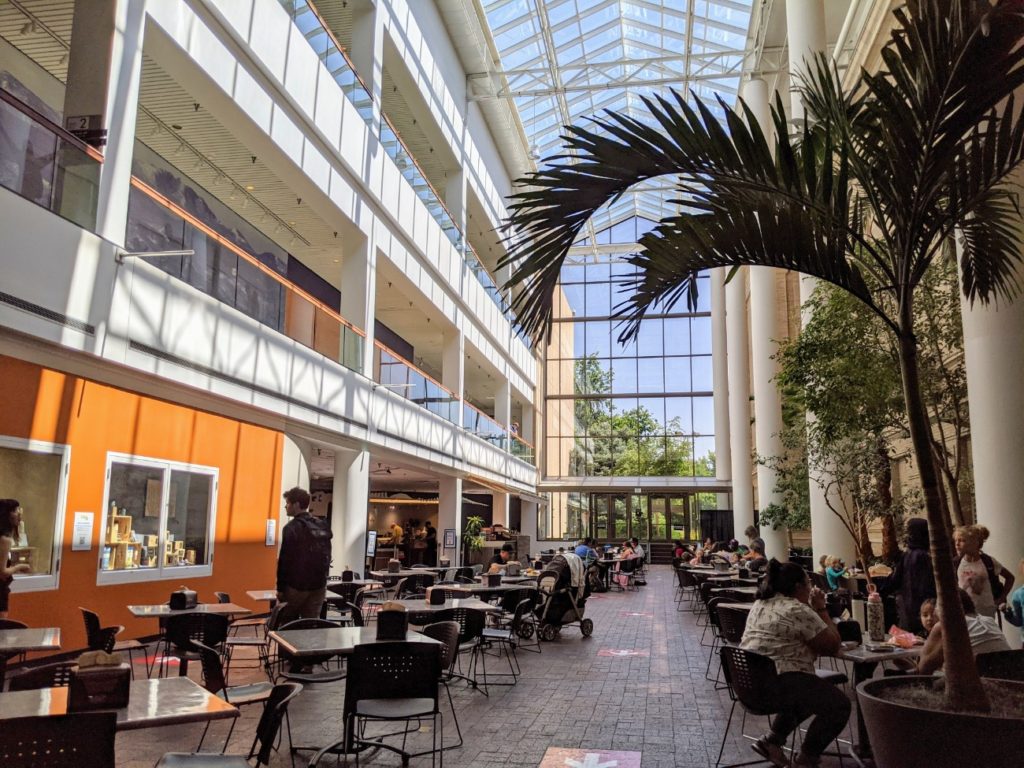
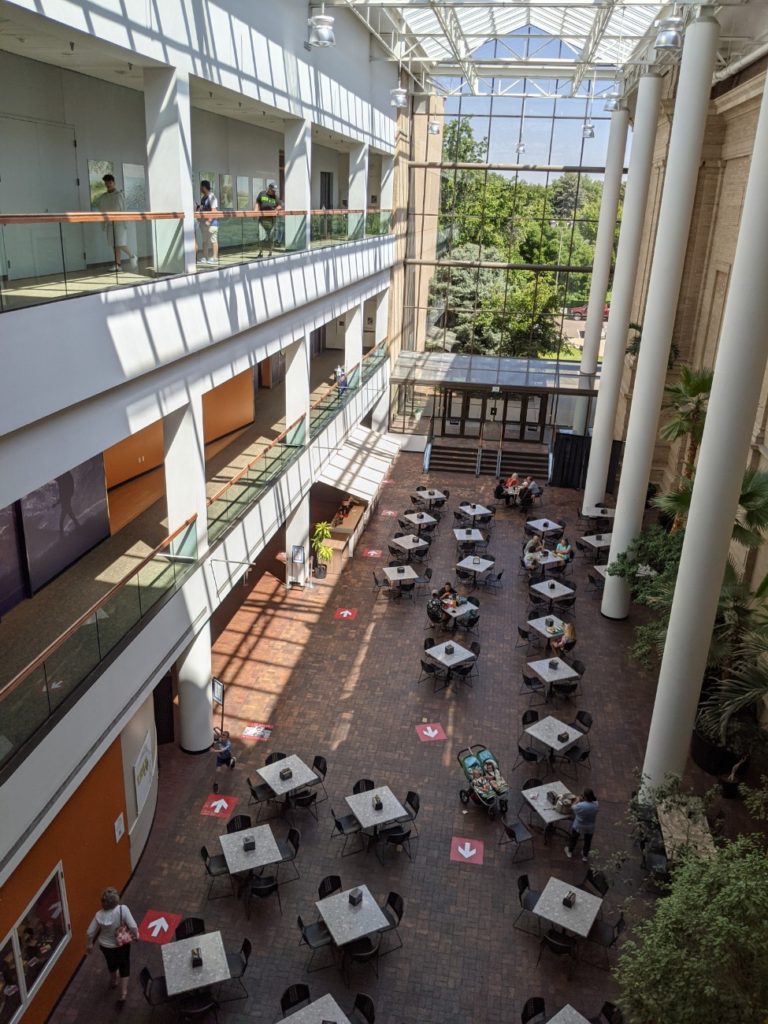
Admission & Hours
The Denver Museum of Nature & Science is open daily from 9 am-5 pm. There are extended hours every Friday, which means the museum is open until 9 pm. (There were no extended hours in January, but they look to resume in February.) Parking is free.
All visitors must buy a timed ticket for entry, and masks are required indoors at this time. General Admission tickets cost $19.95 for adults, $14.95 for youth 3-18, and $16.95 for seniors 65 and over. Any special exhibits, IMAX, or planetarium shows are extra. Purchase admission online here.
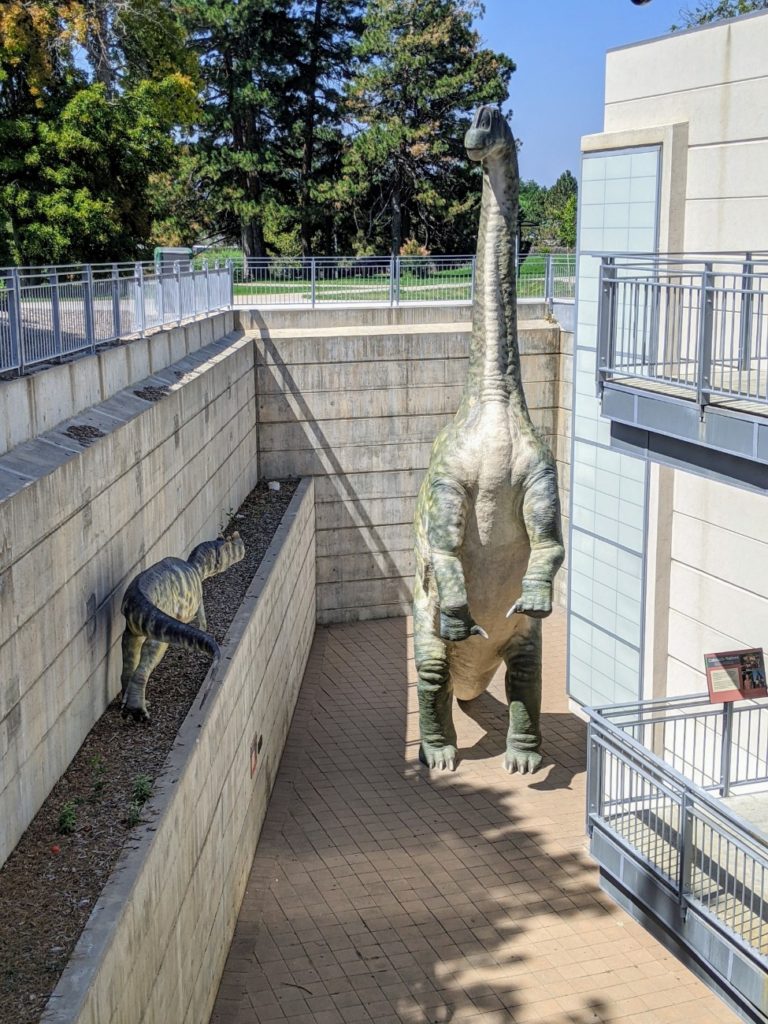
Discounts
There is a $1 discount per ticket if you buy online for “off-peak” entry times, which means before 10 am and after 2 pm.
The museum is FREE on certain days of the year, check out the dates on this page. The next free day is Monday, February 7. You still have to reserve an entry time, since numbers are limited.
$1 admission is available for those with SNAP (Supplemental Nutrition Assistance Program) cards.
All active and retired military receive $3 off each admission, and 10% off any membership (except an individual plan.)
Discounted admission to the Denver Museum of Nature & Science is included in the Denver City Pass.
College students with a valid ID receive 10% off admission and all IMAX or planetarium shows, and special exhibits.
Free admission is available to all K-12 educators with a valid staff ID.
Even Bank of America cardholders have access to special free days through their “Museums on Us” program. Free days occur the first full weekend of every month. Learn more about the program here.
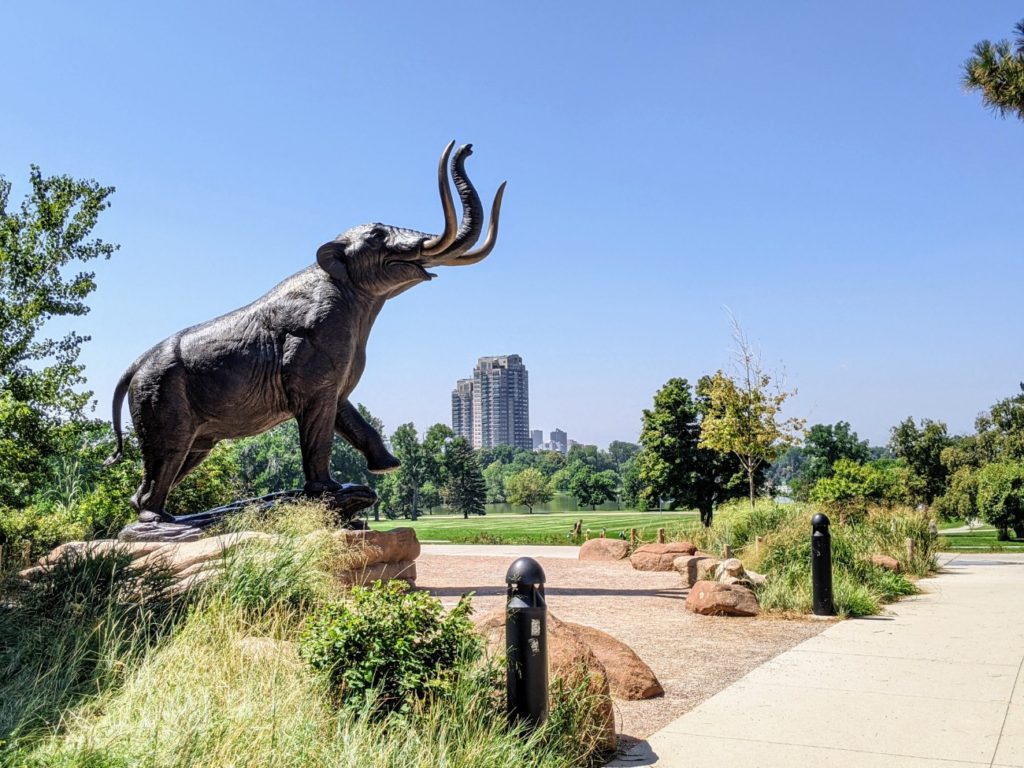
Doing EVERYTHING
If you want to do every last thing in the Denver Museum of Nature & Science, every special exhibit, and every theater show (which sounds like something only I would do), it would cost $68.45, and likely more like $88 or $108 because doing everything would take at least 2-3 days.
If you’re going that far, you might as well get a museum membership, with an individual plan that costs $65, and discounts for food and $2 off the special exhibit. Dual or family memberships make even more fiscal sense. Even if you’re not local, you might want to look into the cost of what you want to see vs. membership costs. Plus, membership gets you reciprocal admission in 471 science and technology centers across the country (and some outside of it.)
(EDIT: I had written an email to the museum’s guest services and I got a very helpful – and quick! – reply. They actually worked out all the math and figured at normal adult prices, three days seeing every last exhibit and film comes out about the same. You would get discounts on food and other purchases, however, so that might put you over the edge for overall savings.)
Conclusion
In all, I really enjoyed the Denver Museum of Nature & Science. I wish I had more time to explore slowly and not zoom through as I did. In fact, I dearly wish I had stayed at the museum all day and not left to go see the circus, which I did not enjoy very much. I didn’t know what I was getting into, so don’t be like me! Do your homework and you’ll know what to expect. It is worth making a day of it.
Be First to Comment